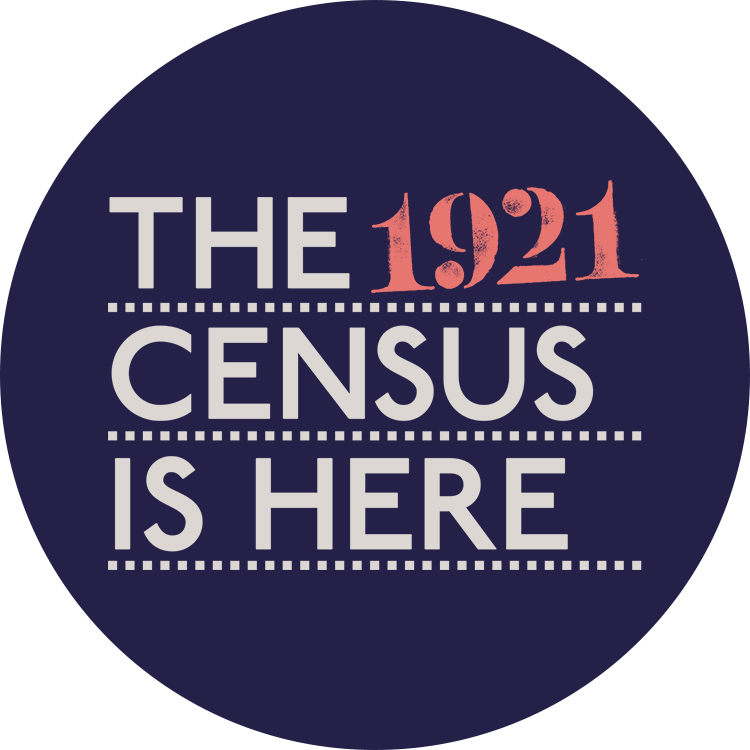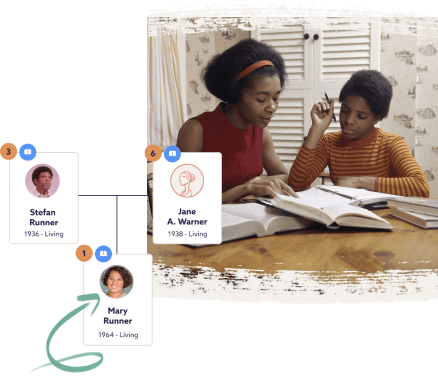National Trust Cotehele Mill
From Cornwall to Colorado, discover the fascinating stories of Cotehele Mill's local families We’ve used the 1921 Census to bring Cotehele Mill’s never-before-seen history to life. Trace back over four generations of the Langsford family, in a tale that involves everything from misfortune to migration in search of gold.
What were your ancestors doing in 1921? Use our collection, including historical newspapers and exclusive census records, to trace back your family through the generations. When you build your family tree with Findmypast, you never know what you might discover.
Image credit: ©National Trust Images/James Dobson
A glimpse into Victorian Britain With its watermill and preserved workshops, Cotehele Mill offers a fascinating look into what life was like for our 19th-century ancestors. From millers to craftsmen, an entire community surrounded Cotehele - with our record collection, we've made some surprising discoveries.
Who was at Cotehele in 1921? We can find Cotehele Mill in the 1921 Census , inhabited by the local Langsford family. The nine-bedroom property had six people living in it. These were:
Parents Harold Langsford (b. 1891) and Dorothy B. Langsford (b. 1892) Their children: Marie, aged 6, Nancy, aged 4, and Peter, aged 2 A domestic servant named Annie Ellis (b. 1894) While his two eldest children attended school 'part-time', Harold was a miller and employer, responsible for the everyday running of the mill.
So, how did the Langsfords come to live and work at Cotehele?
Four generations of millers Our research found that Harold Langsford was far from the first miller in his family. He was descended from a long line of millers in St. Dominick - the earliest was James Langsford , born c. 1771, Harold's great-grandfather. Harold's father Charles Sr. had taken over Cotehele at the turn of the 19th century - at this time, our records indicate that Cotehele may have instead been called 'Morden Mill'.
Image credit: Cotehele Mill by Ashley Dace, CC BY-SA 2.0 via Wikimedia Commons.
Nelson and Horatio Langsford He and his wife Mary had 11 children before Mary sadly died of 'sudden heart failure' in 1910. She is buried in the St. Dominick parish cemetery, alongside many of her family members.
As was fashionable during this period, the Langsfords named their eldest sons after historical figures, hence we have Nelson (b. 1878) and Horatio (b. 1878). Over a 11 year stretch, Charles and Mary also had Stanley, Mabel, Bertram, Lydia, Albert, Harold, Dorothy, Kate, and Mary.
Some of their children lived adventurous lives - but we'll return to that later.
A rather 'puzzling' family... This bustling family clearly had a penchant for puzzle-solving, as a break from the hard work of the mill. We find them in our newspaper collection , submitting crossword solutions to the local paper. Mary and Harold are named as 'solution winners' on more than one occasion.
Do you think you could give Mary Langsford a run for her money? A word of warning- it's pretty tricky! See how you do with this cryptic crossword from 1931 ...
A tale of three brothers Mary and Harold's eldest son Nelson followed in the footsteps of his naval namesake - he joined the Royal Navy as an engineer in 1900, aged 22. He served for 12 years, stationed around the UK and at one point in the Mediterranean. He re-joined during World War 1 and was part of the Dardanelles campaign aboard the HMS Prince George. But he wasn't the only one of his siblings to venture far from home...
Our passenger lists reveal that Nelson's younger brothers George and Albert (born in 1887 and 1889, respectively) emigrated to the United States on 16 October 1909. They ended up working as miners in Telluride, Colorado. While George returned to Cornwall with his family in 1917, Albert stayed in the States, even becoming a US citizen in 1918.
Image credit: Kurt Bauschardt, CC BY-SA 2.0 <https://creativecommons.org/licenses/by-sa/2.0>, via Wikimedia Commons .
A case of gold fever Albert can be found in the 1910 US Census , staying at the Smuggler boarding house in San Miguel County, Colorado. He listed his occupation as 'gold miner', along with his partners John Franzen and Ed Holm. Clearly, the three men had pooled their money together and bought a land claim to try and find their own gold.
Just a few years later, we find Albert working as a mine employee, indicating that this attempt to strike gold had proved fruitless.
Image credit: James St. John, CC BY 2.0 <https://creativecommons.org/licenses/by/2.0>, via Wikimedia Commons .
The American dream? During the Great War, Albert served as an engineer in the US military. By 1920, we find him back in San Miguel County, again working at the Smuggler mine. Aged 31, he is listed as an American citizen for the first time. He's living as a boarder, with no fixed place of residence. As the newspapers indicate, Albert's American adventure was far from easy...
In 1920, he was shot in the back by a 'stray bullet' while at work - this seems to have been a freak occurrence, rather than an intentional attack. Thankfully, he survived the gunshot.
Travel and toil By 1930, Albert was working as a 'tram man' in Plumas County, California. He didn't manage to avoid further harm - a newspaper reported that he got a piece of steel in his eye in May 1933. Just two years later, he was treated at the Portola Hospital for 'a badly cut head and wound on the side of the head', while working at a copper mine. In 1935, he is described as having been 'disabled for some time'.
When war broke out yet again, Albert re-enrolled. By this time (in 1942), he was living in Nevada County, California, with a Heather Telfer. He was aged 53 and unemployed. Having fought in two world wars and endured decades of back-breaking labour, Albert died on 28 February 1949. He is buried in a veteran's home cemetery.
Image credit: The Telluride Journal, 16 September 1920. Colorado Historic Newspapers Collection , Colorado State Library.
From Cornwall to California The long journey made by George and Albert Langsford in 1909 may seem unexpected, but they were part of a wider trend of Cornish miners who flocked to the United States and Australia in search of gold. For many years, Cornwall was in fact home to the deepest mine in the world (at Dolcoath), so it's no surprise that many of its residents took up the calls of the burgeoning overseas mining industry.
As Cornwall's own mines closed at the end of the 19th century and the price of copper fell, many workers moved abroad in search of their fortune. An estimated 250,000 people left Cornwall to seek overseas work between 1815 and 1920, many of whom worked in mining.
The rush for gold The initial gold rush - which began with the discovery of gold in California in 1848 - spread across the western states and territories throughout the 1850s, and there were several successive waves of immigration in the period leading up to World War 1. Focused on precious metals, from the silver in Colorado to the copper of the Sierra Nevada, workers from around the globe flocked for the chance of a better life.
What awaited most of them wasn't a quick win, but rather decades of dangerous work and poor living conditions.
Albert's calamitous life story offers insight into the hardships faced by US miners in the 19th and 20th centuries. While his story is striking, it is far from unique. By 1949, Albert Langsford was a long way from his family's mill in St. Dominick.
A mill like no other While his brothers flew the nest, Harold Langsford remained in Cornwall and took over the running of Cotehele Mill from his father. With deep roots in the area, the Langsfords continued to be key members of the local community. In fact, we found 58 Langsfords in the St Dominick parish church cemetery - including Mary and Harold themselves.
From naval heroism to crossword sleuthing, all manner of stories are contained within the walls of this fascinating property.
Image credit: Cotehele Mill - Waterwheel by Ashley Dace, CC BY-SA 2.0, via Wikimedia Commons .
Want to find out more, or maybe plan your next visit? Head to the National Trust site to explore Cotehele Mill in even more detail.
Only at Findmypast
Like that of Cotehele Mill, your history is full of incredible people and tales. Explore it today, when you start your family tree.
Reconnect with your roots
What secrets lie in your family's past? Find out, by starting your Findmypast family tree today. With our handy tree builder, it couldn't be easier.
Start your family tree
What were your relatives doing in 1921?
Explore the stories contained within the 1921 Census, which is available online exclusively at Findmypast.
Search the 1921 Census
Read all about it
Whether for their community efforts or scandalous lives, your ancestor may have made headlines. Discover their stories, by browsing the largest archive of British and Irish newspapers online.
Explore our pages The 1921 Census is just the beginning... Trace the amazing past of the National Trust's places, or your own family history, through our rich collection of online records.
Censuses dating as far back as 1841 National, regional and local newspaper archives Detail-packed church, military, travel and crime records, plus so much more Endless discoveries await.
{"hostname":"www.findmypast.co.uk","user":{"ip_address":"3.129.71.148","ldKey":"00000001-0000-0000-0000-000000000000","analytics":{"tree":"unknown","person_count":"unknown","login_status":"false","gedcom_user":"unknown","free_tree_hints_remaining":3,"is_library":"false","current_relationship_type":[],"length_relationship_days":null,"free_trial":"False","titan":true}},"apolloState":{"FeatureToggle:allow-shadow-trees-v1":{"id":"allow-shadow-trees-v1","__typename":"FeatureToggle","variation":true},"FeatureToggle:android_blog_article_cta_enabled":{"id":"android_blog_article_cta_enabled","__typename":"FeatureToggle","variation":false},"FeatureToggle:android_blog_article_links_enabled":{"id":"android_blog_article_links_enabled","__typename":"FeatureToggle","variation":false},"FeatureToggle:arborists-using-new-gedcom-upload-proxy_2024-06-24":{"id":"arborists-using-new-gedcom-upload-proxy_2024-06-24","__typename":"FeatureToggle","variation":true},"FeatureToggle:arborists_birth-record-experiment_2024-08-21":{"id":"arborists_birth-record-experiment_2024-08-21","__typename":"FeatureToggle","variation":{"inExperiment":false}},"FeatureToggle:arborists_getting-started-tasks_2024-07-11":{"id":"arborists_getting-started-tasks_2024-07-11","__typename":"FeatureToggle","variation":{"inExperiment":false}},"FeatureToggle:arborists_suggested-node-improvement-experiment_2024-09-02":{"id":"arborists_suggested-node-improvement-experiment_2024-09-02","__typename":"FeatureToggle","variation":{"inExperiment":false}},"FeatureToggle:atomic-79_combined-experiment-transcript-related-records_2024-04-02":{"id":"atomic-79_combined-experiment-transcript-related-records_2024-04-02","__typename":"FeatureToggle","variation":{"variant":2,"inExperiment":true}},"FeatureToggle:atomic-79_connected-content-service-records_2024-06-18":{"id":"atomic-79_connected-content-service-records_2024-06-18","__typename":"FeatureToggle","variation":{"variant":0,"inExperiment":true}},"FeatureToggle:atomic-79_enable-new-discover-pages_2024-08-27":{"id":"atomic-79_enable-new-discover-pages_2024-08-27","__typename":"FeatureToggle","variation":{"inExperiment":false}},"FeatureToggle:atomic-79_logged-out-search-screens_2024-09-03":{"id":"atomic-79_logged-out-search-screens_2024-09-03","__typename":"FeatureToggle","variation":{"inExperiment":false}},"FeatureToggle:atomic-79_paid-search-wizard-v2_2024-07-08":{"id":"atomic-79_paid-search-wizard-v2_2024-07-08","__typename":"FeatureToggle","variation":{"variant":0,"inExperiment":true}},"FeatureToggle:atomic-79_record-set-page_2024-07-29":{"id":"atomic-79_record-set-page_2024-07-29","__typename":"FeatureToggle","variation":{"variant":0,"inExperiment":true}},"FeatureToggle:atomic-79_redirect-paid-search-to-wizard_2024-03-11":{"id":"atomic-79_redirect-paid-search-to-wizard_2024-03-11","__typename":"FeatureToggle","variation":{"inExperiment":false}},"FeatureToggle:atomic-79_subcategory-paid-search-wizard_2024-07-22":{"id":"atomic-79_subcategory-paid-search-wizard_2024-07-22","__typename":"FeatureToggle","variation":{"variant":0,"inExperiment":true}},"FeatureToggle:atomic-79_visual-search-result-cards_v3_2024-02-26":{"id":"atomic-79_visual-search-result-cards_v3_2024-02-26","__typename":"FeatureToggle","variation":{"inExperiment":true,"variant":2}},"FeatureToggle:beehive_merge-with-preferences-experiment_2024-08-19":{"id":"beehive_merge-with-preferences-experiment_2024-08-19","__typename":"FeatureToggle","variation":{"inExperiment":false}},"FeatureToggle:beehive_person-profile-completeness-experiment_2024-03-05":{"id":"beehive_person-profile-completeness-experiment_2024-03-05","__typename":"FeatureToggle","variation":{"variant":1,"inExperiment":true}},"FeatureToggle:beehive_person-profile-completeness-tree-setting-experiment_2024-04-23":{"id":"beehive_person-profile-completeness-tree-setting-experiment_2024-04-23","__typename":"FeatureToggle","variation":{"variant":1,"inExperiment":true}},"FeatureToggle:beehive_record-merge-fact-review-cards-experiment_2024-08-07":{"id":"beehive_record-merge-fact-review-cards-experiment_2024-08-07","__typename":"FeatureToggle","variation":{"inExperiment":true,"variant":1}},"FeatureToggle:beehive_record-merge-with-hannibal-experiment_2024-02-06":{"id":"beehive_record-merge-with-hannibal-experiment_2024-02-06","__typename":"FeatureToggle","variation":{"variant":0,"inExperiment":true}},"FeatureToggle:beehive_tree-to-tree-sources-experiment_2024-04-04":{"id":"beehive_tree-to-tree-sources-experiment_2024-04-04","__typename":"FeatureToggle","variation":{"inExperiment":true,"variant":1}},"FeatureToggle:beehive_two-hop-marriages-in-record-merge-v2-experiment_2024-07-24":{"id":"beehive_two-hop-marriages-in-record-merge-v2-experiment_2024-07-24","__typename":"FeatureToggle","variation":{"variant":1,"inExperiment":true}},"FeatureToggle:ci-integration-test":{"id":"ci-integration-test","__typename":"FeatureToggle","variation":false},"FeatureToggle:disable-filmstrip-feature":{"id":"disable-filmstrip-feature","__typename":"FeatureToggle","variation":false},"FeatureToggle:disable-ppv-payments-in-drawer":{"id":"disable-ppv-payments-in-drawer","__typename":"FeatureToggle","variation":false},"FeatureToggle:discovery-enable-family-notices-on-timeline_2024-07-04":{"id":"discovery-enable-family-notices-on-timeline_2024-07-04","__typename":"FeatureToggle","variation":false},"FeatureToggle:discovery-enable-fullpage-clipping-on-timeline_2024-07-30":{"id":"discovery-enable-fullpage-clipping-on-timeline_2024-07-30","__typename":"FeatureToggle","variation":true},"FeatureToggle:discovery-enable_map_route_2024-07-25":{"id":"discovery-enable_map_route_2024-07-25","__typename":"FeatureToggle","variation":false},"FeatureToggle:discovery_church-suggestion-on-marriage-record-merge_2024-06-28":{"id":"discovery_church-suggestion-on-marriage-record-merge_2024-06-28","__typename":"FeatureToggle","variation":{"inExperiment":true,"variant":0}},"FeatureToggle:discovery_national-newspaper-cover-for-parents-and-grandparents-in-tree-onboarding_v1_2024-03-26":{"id":"discovery_national-newspaper-cover-for-parents-and-grandparents-in-tree-onboarding_v1_2024-03-26","__typename":"FeatureToggle","variation":{"inExperiment":false}},"FeatureToggle:discovery_offering-newspaper-covers-to-nodes-in-tree-onboarding_v1_2024-04-11":{"id":"discovery_offering-newspaper-covers-to-nodes-in-tree-onboarding_v1_2024-04-11","__typename":"FeatureToggle","variation":{"inExperiment":false}},"FeatureToggle:discovery_tree-profile-explore-map-experiment_2024-04-26":{"id":"discovery_tree-profile-explore-map-experiment_2024-04-26","__typename":"FeatureToggle","variation":{"variant":1,"inExperiment":true}},"FeatureToggle:discovery_vignettes-on-timeline_2024-04-24":{"id":"discovery_vignettes-on-timeline_2024-04-24","__typename":"FeatureToggle","variation":{"inExperiment":false}},"FeatureToggle:discovery_vignettes-on-timeline_2024-06-11":{"id":"discovery_vignettes-on-timeline_2024-06-11","__typename":"FeatureToggle","variation":{"inExperiment":false}},"FeatureToggle:downgrade-subscription-popup":{"id":"downgrade-subscription-popup","__typename":"FeatureToggle","variation":true},"FeatureToggle:ecomm-disable-minimum-price-upgrade":{"id":"ecomm-disable-minimum-price-upgrade","__typename":"FeatureToggle","variation":false},"FeatureToggle:ecomm-enable-merged-recurly-external-subscriptions":{"id":"ecomm-enable-merged-recurly-external-subscriptions","__typename":"FeatureToggle","variation":false},"FeatureToggle:ecomm-enable-saved-payment-method-caching":{"id":"ecomm-enable-saved-payment-method-caching","__typename":"FeatureToggle","variation":true},"FeatureToggle:enable-12-month-paid-monthly-plans":{"id":"enable-12-month-paid-monthly-plans","__typename":"FeatureToggle","variation":false},"FeatureToggle:enable-1921-address-search":{"id":"enable-1921-address-search","__typename":"FeatureToggle","variation":true},"FeatureToggle:enable-1921-transcript-error-report-page":{"id":"enable-1921-transcript-error-report-page","__typename":"FeatureToggle","variation":true},"FeatureToggle:enable-cancel-gedcom-import-export":{"id":"enable-cancel-gedcom-import-export","__typename":"FeatureToggle","variation":false},"FeatureToggle:enable-cep-user-initialisation":{"id":"enable-cep-user-initialisation","__typename":"FeatureToggle","variation":true},"FeatureToggle:enable-christmas-theme-homepage":{"id":"enable-christmas-theme-homepage","__typename":"FeatureToggle","variation":false},"FeatureToggle:enable-clipping-ocr-on-image-share-page":{"id":"enable-clipping-ocr-on-image-share-page","__typename":"FeatureToggle","variation":false},"FeatureToggle:enable-collections-discover-page":{"id":"enable-collections-discover-page","__typename":"FeatureToggle","variation":false},"FeatureToggle:enable-enhanced-search-page":{"id":"enable-enhanced-search-page","__typename":"FeatureToggle","variation":true},"FeatureToggle:enable-kafka-transactional-email-events":{"id":"enable-kafka-transactional-email-events","__typename":"FeatureToggle","variation":"true"},"FeatureToggle:enable-mobile-banner":{"id":"enable-mobile-banner","__typename":"FeatureToggle","variation":true},"FeatureToggle:enable-national-trust":{"id":"enable-national-trust","__typename":"FeatureToggle","variation":true},"FeatureToggle:enable-new-location-field-on-quick-edit-drawer":{"id":"enable-new-location-field-on-quick-edit-drawer","__typename":"FeatureToggle","variation":true},"FeatureToggle:enable-new-location-field-on-tree-onboarding":{"id":"enable-new-location-field-on-tree-onboarding","__typename":"FeatureToggle","variation":true},"FeatureToggle:enable-new-payment-page":{"id":"enable-new-payment-page","__typename":"FeatureToggle","variation":false},"FeatureToggle:enable-new-web-home-page":{"id":"enable-new-web-home-page","__typename":"FeatureToggle","variation":true},"FeatureToggle:enable-new-web-home-roll-out-to-old-users":{"id":"enable-new-web-home-roll-out-to-old-users","__typename":"FeatureToggle","variation":true},"FeatureToggle:enable-old-browser-deprecation-banner":{"id":"enable-old-browser-deprecation-banner","__typename":"FeatureToggle","variation":true},"FeatureToggle:enable-person-record-review":{"id":"enable-person-record-review","__typename":"FeatureToggle","variation":true},"FeatureToggle:enable-post-purchase-referral-popup":{"id":"enable-post-purchase-referral-popup","__typename":"FeatureToggle","variation":true},"FeatureToggle:enable-prismic-1939-pages-fallback-redirect":{"id":"enable-prismic-1939-pages-fallback-redirect","__typename":"FeatureToggle","variation":false},"FeatureToggle:enable-prismic-blog-pages-fallback-redirect":{"id":"enable-prismic-blog-pages-fallback-redirect","__typename":"FeatureToggle","variation":false},"FeatureToggle:enable-prismic-landing-pages-fallback-redirect":{"id":"enable-prismic-landing-pages-fallback-redirect","__typename":"FeatureToggle","variation":false},"FeatureToggle:enable-private-messaging":{"id":"enable-private-messaging","__typename":"FeatureToggle","variation":true},"FeatureToggle:enable-private-messaging-current-conversation-menu":{"id":"enable-private-messaging-current-conversation-menu","__typename":"FeatureToggle","variation":true},"FeatureToggle:enable-private-messaging-emojis":{"id":"enable-private-messaging-emojis","__typename":"FeatureToggle","variation":true},"FeatureToggle:enable-private-messaging-inbox":{"id":"enable-private-messaging-inbox","__typename":"FeatureToggle","variation":true},"FeatureToggle:enable-private-messaging-new-button":{"id":"enable-private-messaging-new-button","__typename":"FeatureToggle","variation":true},"FeatureToggle:enable-private-messaging-unread-indicator":{"id":"enable-private-messaging-unread-indicator","__typename":"FeatureToggle","variation":true},"FeatureToggle:enable-quick-edit-profile-drawer":{"id":"enable-quick-edit-profile-drawer","__typename":"FeatureToggle","variation":true},"FeatureToggle:enable-record-merge-review-optimised-drawer":{"id":"enable-record-merge-review-optimised-drawer","__typename":"FeatureToggle","variation":true},"FeatureToggle:enable-redirect-to-logged-out-homepage-uk":{"id":"enable-redirect-to-logged-out-homepage-uk","__typename":"FeatureToggle","variation":true},"FeatureToggle:enable-redirect-to-logged-out-newspapers":{"id":"enable-redirect-to-logged-out-newspapers","__typename":"FeatureToggle","variation":true},"FeatureToggle:enable-saving-searches-for-shadow-trees":{"id":"enable-saving-searches-for-shadow-trees","__typename":"FeatureToggle","variation":true},"FeatureToggle:enable-segmented-offers-from-db":{"id":"enable-segmented-offers-from-db","__typename":"FeatureToggle","variation":true},"FeatureToggle:enable-start-your-family-tree-tile":{"id":"enable-start-your-family-tree-tile","__typename":"FeatureToggle","variation":true},"FeatureToggle:enable-story-vignette-page":{"id":"enable-story-vignette-page","__typename":"FeatureToggle","variation":true},"FeatureToggle:enable-titan-landing-pages-redirect-to-home-route":{"id":"enable-titan-landing-pages-redirect-to-home-route","__typename":"FeatureToggle","variation":true},"FeatureToggle:enable-transcript-corrections-page":{"id":"enable-transcript-corrections-page","__typename":"FeatureToggle","variation":true},"FeatureToggle:enable-tree-profiles-rollout":{"id":"enable-tree-profiles-rollout","__typename":"FeatureToggle","variation":true},"FeatureToggle:enable-web-home-explainer-component":{"id":"enable-web-home-explainer-component","__typename":"FeatureToggle","variation":true},"FeatureToggle:enable-web-home-search-census-tile":{"id":"enable-web-home-search-census-tile","__typename":"FeatureToggle","variation":true},"FeatureToggle:enable-web-home-suggested-mother-tile":{"id":"enable-web-home-suggested-mother-tile","__typename":"FeatureToggle","variation":true},"FeatureToggle:enable-web-home-top-hints-tile":{"id":"enable-web-home-top-hints-tile","__typename":"FeatureToggle","variation":true},"FeatureToggle:enable-web-home-user-personalisation-settings":{"id":"enable-web-home-user-personalisation-settings","__typename":"FeatureToggle","variation":true},"FeatureToggle:enable_digital_wallet_payments":{"id":"enable_digital_wallet_payments","__typename":"FeatureToggle","variation":false},"FeatureToggle:flipper-database":{"id":"flipper-database","__typename":"FeatureToggle","variation":0},"FeatureToggle:free-access":{"id":"free-access","__typename":"FeatureToggle","variation":false},"FeatureToggle:free-access-weekend":{"id":"free-access-weekend","__typename":"FeatureToggle","variation":false},"FeatureToggle:gedcom-import-available":{"id":"gedcom-import-available","__typename":"FeatureToggle","variation":true},"FeatureToggle:gedcom-import-stack":{"id":"gedcom-import-stack","__typename":"FeatureToggle","variation":"old"},"FeatureToggle:gift-guest-checkout":{"id":"gift-guest-checkout","__typename":"FeatureToggle","variation":true},"FeatureToggle:hide-tree-button-for-logged-out-users":{"id":"hide-tree-button-for-logged-out-users","__typename":"FeatureToggle","variation":true},"FeatureToggle:image-search-ui-log-level":{"id":"image-search-ui-log-level","__typename":"FeatureToggle","variation":"warn"},"FeatureToggle:intent-capture-v3":{"id":"intent-capture-v3","__typename":"FeatureToggle","variation":{"inExperiment":false}},"FeatureToggle:library-hide-member-specific-options":{"id":"library-hide-member-specific-options","__typename":"FeatureToggle","variation":false},"FeatureToggle:library-view":{"id":"library-view","__typename":"FeatureToggle","variation":false},"FeatureToggle:manage-my-subscription":{"id":"manage-my-subscription","__typename":"FeatureToggle","variation":true},"FeatureToggle:mavericks_android-experiment-testing_2024-02-14":{"id":"mavericks_android-experiment-testing_2024-02-14","__typename":"FeatureToggle","variation":{"inExperiment":true,"variant":1}},"FeatureToggle:mavericks_app-onboarding_2024-04-08":{"id":"mavericks_app-onboarding_2024-04-08","__typename":"FeatureToggle","variation":{"inExperiment":true,"variant":0}},"FeatureToggle:mavericks_collections_2024-07-04":{"id":"mavericks_collections_2024-07-04","__typename":"FeatureToggle","variation":{"variant":0,"inExperiment":true}},"FeatureToggle:mavericks_newspaper-viewer_2024-06-17":{"id":"mavericks_newspaper-viewer_2024-06-17","__typename":"FeatureToggle","variation":true},"FeatureToggle:mavericks_profile-completeness_2024-02-16":{"id":"mavericks_profile-completeness_2024-02-16","__typename":"FeatureToggle","variation":{"inExperiment":true,"variant":0}},"FeatureToggle:mavericks_record-viewer_2024-06-20":{"id":"mavericks_record-viewer_2024-06-20","__typename":"FeatureToggle","variation":false},"FeatureToggle:mavericks_review-prompt_2024-05-20":{"id":"mavericks_review-prompt_2024-05-20","__typename":"FeatureToggle","variation":true},"FeatureToggle:mavericks_stories_2024-03-12":{"id":"mavericks_stories_2024-03-12","__typename":"FeatureToggle","variation":{"variant":0,"inExperiment":true}},"FeatureToggle:mavericks_whats-next_2024-05-29":{"id":"mavericks_whats-next_2024-05-29","__typename":"FeatureToggle","variation":{"inExperiment":false}},"FeatureToggle:migrate-lapsed-legacy-users":{"id":"migrate-lapsed-legacy-users","__typename":"FeatureToggle","variation":true},"FeatureToggle:national-trust-entitlement":{"id":"national-trust-entitlement","__typename":"FeatureToggle","variation":true},"FeatureToggle:newspaper-viewer-add-to-tree":{"id":"newspaper-viewer-add-to-tree","__typename":"FeatureToggle","variation":true},"FeatureToggle:op-use-cdn":{"id":"op-use-cdn","__typename":"FeatureToggle","variation":"true"},"FeatureToggle:pause-button-on-my-subscription-page":{"id":"pause-button-on-my-subscription-page","__typename":"FeatureToggle","variation":false},"FeatureToggle:pause-subscription":{"id":"pause-subscription","__typename":"FeatureToggle","variation":true},"FeatureToggle:public-user-profile-feature":{"id":"public-user-profile-feature","__typename":"FeatureToggle","variation":true},"FeatureToggle:public-user-profile-tree-search":{"id":"public-user-profile-tree-search","__typename":"FeatureToggle","variation":true},"FeatureToggle:record-merge-drawer-v2":{"id":"record-merge-drawer-v2","__typename":"FeatureToggle","variation":false},"FeatureToggle:record-search-zendesk-live-chat":{"id":"record-search-zendesk-live-chat","__typename":"FeatureToggle","variation":false},"FeatureToggle:ronan-testing-123":{"id":"ronan-testing-123","__typename":"FeatureToggle","variation":true},"FeatureToggle:search-predictive-count":{"id":"search-predictive-count","__typename":"FeatureToggle","variation":true},"FeatureToggle:search-results-facet-counts":{"id":"search-results-facet-counts","__typename":"FeatureToggle","variation":true},"FeatureToggle:show-app-acquisition-media-drawer-card":{"id":"show-app-acquisition-media-drawer-card","__typename":"FeatureToggle","variation":true},"FeatureToggle:show-customer-service-gdpr-section":{"id":"show-customer-service-gdpr-section","__typename":"FeatureToggle","variation":true},"FeatureToggle:show-mfa-temporarily-unavailable-message":{"id":"show-mfa-temporarily-unavailable-message","__typename":"FeatureToggle","variation":false},"FeatureToggle:show-navigation-button-for-new-profile-page":{"id":"show-navigation-button-for-new-profile-page","__typename":"FeatureToggle","variation":false},"FeatureToggle:show-share-tree-button":{"id":"show-share-tree-button","__typename":"FeatureToggle","variation":true},"FeatureToggle:show-trustpilot-widget":{"id":"show-trustpilot-widget","__typename":"FeatureToggle","variation":true},"FeatureToggle:show-view-tree-button":{"id":"show-view-tree-button","__typename":"FeatureToggle","variation":true},"FeatureToggle:single-record-merge-result-drawer":{"id":"single-record-merge-result-drawer","__typename":"FeatureToggle","variation":true},"FeatureToggle:stories-context-standardization":{"id":"stories-context-standardization","__typename":"FeatureToggle","variation":"false"},"FeatureToggle:stories-context-tracking-standardization":{"id":"stories-context-tracking-standardization","__typename":"FeatureToggle","variation":false},"FeatureToggle:the-alchemists_cancellation-offer_v1_2024-06-06":{"id":"the-alchemists_cancellation-offer_v1_2024-06-06","__typename":"FeatureToggle","variation":{"variant":1,"inExperiment":true}},"FeatureToggle:the-alchemists_disruptive-dunning-banner_v1_2024-03-06":{"id":"the-alchemists_disruptive-dunning-banner_v1_2024-03-06","__typename":"FeatureToggle","variation":{"inExperiment":false}},"FeatureToggle:the-alchemists_iterable-experiments_v1_2024-07-18":{"id":"the-alchemists_iterable-experiments_v1_2024-07-18","__typename":"FeatureToggle","variation":{"variant":0,"inExperiment":true}},"FeatureToggle:the-alchemists_new-subs-for-lapsed-customers_v2_2024-09-02":{"id":"the-alchemists_new-subs-for-lapsed-customers_v2_2024-09-02","__typename":"FeatureToggle","variation":{"inExperiment":true,"variant":1}},"FeatureToggle:the-alchemists_new-subs-for-new-customers_v2_2024-09-02":{"id":"the-alchemists_new-subs-for-new-customers_v2_2024-09-02","__typename":"FeatureToggle","variation":{"inExperiment":true,"variant":2}},"FeatureToggle:the-alchemists_new-subs-in-upgrade_v2_2024-09-02":{"id":"the-alchemists_new-subs-in-upgrade_v2_2024-09-02","__typename":"FeatureToggle","variation":{"inExperiment":true,"variant":0}},"FeatureToggle:the-lab_cardless-free-trial-reward_2024-03-14":{"id":"the-lab_cardless-free-trial-reward_2024-03-14","__typename":"FeatureToggle","variation":{"inExperiment":false}},"FeatureToggle:the-lab_free-newspapers_view_2024-05-15":{"id":"the-lab_free-newspapers_view_2024-05-15","__typename":"FeatureToggle","variation":{"inExperiment":true,"variant":0}},"FeatureToggle:the-lab_tree-builder-plan_2024-06-14":{"id":"the-lab_tree-builder-plan_2024-06-14","__typename":"FeatureToggle","variation":false},"FeatureToggle:the-social-history-archive-citations":{"id":"the-social-history-archive-citations","__typename":"FeatureToggle","variation":true},"FeatureToggle:the_alchemists_checkout_choose_payment_date_v1_2024_01_16":{"id":"the_alchemists_checkout_choose_payment_date_v1_2024_01_16","__typename":"FeatureToggle","variation":{"inExperiment":false}},"FeatureToggle:the_alchemists_enable_1m_cancellation_offer_v1_2024_01_01":{"id":"the_alchemists_enable_1m_cancellation_offer_v1_2024_01_01","__typename":"FeatureToggle","variation":{"inExperiment":false}},"FeatureToggle:timeline-display-record-sources":{"id":"timeline-display-record-sources","__typename":"FeatureToggle","variation":false},"FeatureToggle:timeline-onboarding-modal":{"id":"timeline-onboarding-modal","__typename":"FeatureToggle","variation":true},"FeatureToggle:titan-search-results-error-message":{"id":"titan-search-results-error-message","__typename":"FeatureToggle","variation":false},"FeatureToggle:titan-use-launchdarkly-sdk":{"id":"titan-use-launchdarkly-sdk","__typename":"FeatureToggle","variation":false},"FeatureToggle:untitled-goose_enable-new-strapi-homepage_2024-07-23":{"id":"untitled-goose_enable-new-strapi-homepage_2024-07-23","__typename":"FeatureToggle","variation":true},"FeatureToggle:use-correct-input-types-during-onboarding":{"id":"use-correct-input-types-during-onboarding","__typename":"FeatureToggle","variation":false},"FeatureToggle:use-jigsaw-to-merge-records":{"id":"use-jigsaw-to-merge-records","__typename":"FeatureToggle","variation":false},"FeatureToggle:use-new-cs-api-unstable":{"id":"use-new-cs-api-unstable","__typename":"FeatureToggle","variation":true},"FeatureToggle:use-new-newspaper-viewer":{"id":"use-new-newspaper-viewer","__typename":"FeatureToggle","variation":true},"FeatureToggle:1921-discount":{"id":"1921-discount","__typename":"FeatureToggle","variation":"{\"label\":\"\",\"discount\":0,\"enabled\":false}"},"FeatureToggle:acorn-log-level":{"id":"acorn-log-level","__typename":"FeatureToggle","variation":"warn"},"FeatureToggle:affiliates-api-log-level":{"id":"affiliates-api-log-level","__typename":"FeatureToggle","variation":"debug"},"FeatureToggle:affiliates-consumer-log-level":{"id":"affiliates-consumer-log-level","__typename":"FeatureToggle","variation":"warn"},"FeatureToggle:ajw-log-level":{"id":"ajw-log-level","__typename":"FeatureToggle","variation":"debug"},"FeatureToggle:ajw-test-log-level":{"id":"ajw-test-log-level","__typename":"FeatureToggle","variation":"debug"},"FeatureToggle:all-recordsets-enable-debug":{"id":"all-recordsets-enable-debug","__typename":"FeatureToggle","variation":false},"FeatureToggle:allow-gift-subscription-upgrades":{"id":"allow-gift-subscription-upgrades","__typename":"FeatureToggle","variation":true},"FeatureToggle:analytics-api-log-level":{"id":"analytics-api-log-level","__typename":"FeatureToggle","variation":"debug"},"FeatureToggle:anothertest-log-level":{"id":"anothertest-log-level","__typename":"FeatureToggle","variation":"warn"},"FeatureToggle:antraxx-log-level":{"id":"antraxx-log-level","__typename":"FeatureToggle","variation":"error"},"FeatureToggle:apptest-log-level":{"id":"apptest-log-level","__typename":"FeatureToggle","variation":"debug"},"FeatureToggle:asset-service-proxy-log-level":{"id":"asset-service-proxy-log-level","__typename":"FeatureToggle","variation":"debug"},"FeatureToggle:athena-log-level":{"id":"athena-log-level","__typename":"FeatureToggle","variation":"debug"},"FeatureToggle:ati-just-test-log-level":{"id":"ati-just-test-log-level","__typename":"FeatureToggle","variation":"warn"},"FeatureToggle:atitest-log-level":{"id":"atitest-log-level","__typename":"FeatureToggle","variation":"debug"},"FeatureToggle:atitest2-log-level":{"id":"atitest2-log-level","__typename":"FeatureToggle","variation":"warn"},"FeatureToggle:bdd-doc-store-log-level":{"id":"bdd-doc-store-log-level","__typename":"FeatureToggle","variation":"debug"},"FeatureToggle:birth-date-newspaper-recipe-enable":{"id":"birth-date-newspaper-recipe-enable","__typename":"FeatureToggle","variation":"true"},"FeatureToggle:birth-date-newspaper-recipe-log-level":{"id":"birth-date-newspaper-recipe-log-level","__typename":"FeatureToggle","variation":"warn"},"FeatureToggle:blizzard-log-level":{"id":"blizzard-log-level","__typename":"FeatureToggle","variation":"debug"},"FeatureToggle:blog-proto-log-level":{"id":"blog-proto-log-level","__typename":"FeatureToggle","variation":"debug"},"FeatureToggle:bna-add-users-to-iterable-migration-total-streams-to-run":{"id":"bna-add-users-to-iterable-migration-total-streams-to-run","__typename":"FeatureToggle","variation":"2"},"FeatureToggle:bna-transactional-email-service-should-consume-transactional-email-topic":{"id":"bna-transactional-email-service-should-consume-transactional-email-topic","__typename":"FeatureToggle","variation":true},"FeatureToggle:bna-workflow-log-level":{"id":"bna-workflow-log-level","__typename":"FeatureToggle","variation":"debug"},"FeatureToggle:brat-log-level":{"id":"brat-log-level","__typename":"FeatureToggle","variation":"debug"},"FeatureToggle:cantaloupe-story-test-log-level":{"id":"cantaloupe-story-test-log-level","__typename":"FeatureToggle","variation":"warn"},"FeatureToggle:catholic-heritage-archive-log-level":{"id":"catholic-heritage-archive-log-level","__typename":"FeatureToggle","variation":"debug"},"FeatureToggle:cep-bna-user-crud-consumer-log-level":{"id":"cep-bna-user-crud-consumer-log-level","__typename":"FeatureToggle","variation":"warn"},"FeatureToggle:cep-gate-enable-issuing-iterable-jwts":{"id":"cep-gate-enable-issuing-iterable-jwts","__typename":"FeatureToggle","variation":true},"FeatureToggle:cep-gate-enable-register-device-token":{"id":"cep-gate-enable-register-device-token","__typename":"FeatureToggle","variation":true},"FeatureToggle:cep-gate-log-level":{"id":"cep-gate-log-level","__typename":"FeatureToggle","variation":"debug"},"FeatureToggle:cep-gdpr-consumer-log-level":{"id":"cep-gdpr-consumer-log-level","__typename":"FeatureToggle","variation":"warn"},"FeatureToggle:cep-genes-user-crud-consumer-log-level":{"id":"cep-genes-user-crud-consumer-log-level","__typename":"FeatureToggle","variation":"warn"},"FeatureToggle:cep-migration-service-log-level":{"id":"cep-migration-service-log-level","__typename":"FeatureToggle","variation":"warn"},"FeatureToggle:cep-notifications-hub-consume-hints-for-trustpilot":{"id":"cep-notifications-hub-consume-hints-for-trustpilot","__typename":"FeatureToggle","variation":true},"FeatureToggle:cep-notifications-hub-get-trustpilot-reviews":{"id":"cep-notifications-hub-get-trustpilot-reviews","__typename":"FeatureToggle","variation":true},"FeatureToggle:cep-notifications-hub-log-level":{"id":"cep-notifications-hub-log-level","__typename":"FeatureToggle","variation":"warn"},"FeatureToggle:cep-notifications-hub-process-trustpilot-invitations":{"id":"cep-notifications-hub-process-trustpilot-invitations","__typename":"FeatureToggle","variation":true},"FeatureToggle:cep-notifications-hub-relation-dbo-family-tree-consumer":{"id":"cep-notifications-hub-relation-dbo-family-tree-consumer","__typename":"FeatureToggle","variation":true},"FeatureToggle:cep-notifications-hub-relation-hint-consumer":{"id":"cep-notifications-hub-relation-hint-consumer","__typename":"FeatureToggle","variation":true},"FeatureToggle:cep-notifications-hub-run-trustpilot-clean-up":{"id":"cep-notifications-hub-run-trustpilot-clean-up","__typename":"FeatureToggle","variation":true},"FeatureToggle:cep-notifications-hub-suggested-mother-notifications-v2":{"id":"cep-notifications-hub-suggested-mother-notifications-v2","__typename":"FeatureToggle","variation":true},"FeatureToggle:cep-notifications-hub-transcript-correction-consumer":{"id":"cep-notifications-hub-transcript-correction-consumer","__typename":"FeatureToggle","variation":true},"FeatureToggle:cep-notifications-hub-trustpilot-invitation-send-destination":{"id":"cep-notifications-hub-trustpilot-invitation-send-destination","__typename":"FeatureToggle","variation":"production"},"FeatureToggle:cep-subscription-consumer-log-level":{"id":"cep-subscription-consumer-log-level","__typename":"FeatureToggle","variation":"debug"},"FeatureToggle:cep-subscription-processor-log-level":{"id":"cep-subscription-processor-log-level","__typename":"FeatureToggle","variation":"debug"},"FeatureToggle:cep-user-active-consumer-log-level":{"id":"cep-user-active-consumer-log-level","__typename":"FeatureToggle","variation":"warn"},"FeatureToggle:cep-user-crud-consumer-log-level":{"id":"cep-user-crud-consumer-log-level","__typename":"FeatureToggle","variation":"warn"},"FeatureToggle:cep-user-processor-log-level":{"id":"cep-user-processor-log-level","__typename":"FeatureToggle","variation":"warn"},"FeatureToggle:chaostest-log-level":{"id":"chaostest-log-level","__typename":"FeatureToggle","variation":"debug"},"FeatureToggle:chargebacks-ui-log-level":{"id":"chargebacks-ui-log-level","__typename":"FeatureToggle","variation":"debug"},"FeatureToggle:chris-leo-service-log-level":{"id":"chris-leo-service-log-level","__typename":"FeatureToggle","variation":"debug"},"FeatureToggle:configuration-test-1-log-level":{"id":"configuration-test-1-log-level","__typename":"FeatureToggle","variation":"debug"},"FeatureToggle:connected-content-service-log-level":{"id":"connected-content-service-log-level","__typename":"FeatureToggle","variation":"warn"},"FeatureToggle:crm-fill-delay-processor-enable-consumer":{"id":"crm-fill-delay-processor-enable-consumer","__typename":"FeatureToggle","variation":true},"FeatureToggle:crm-fill-delay-processor-log-level":{"id":"crm-fill-delay-processor-log-level","__typename":"FeatureToggle","variation":"debug"},"FeatureToggle:crm-fill-filter-processor-enable-consumer":{"id":"crm-fill-filter-processor-enable-consumer","__typename":"FeatureToggle","variation":true},"FeatureToggle:crm-fill-filter-processor-log-level":{"id":"crm-fill-filter-processor-log-level","__typename":"FeatureToggle","variation":"debug"},"FeatureToggle:crm-fill-sequence-processor-enable-consumer":{"id":"crm-fill-sequence-processor-enable-consumer","__typename":"FeatureToggle","variation":true},"FeatureToggle:crm-fill-sequence-processor-log-level":{"id":"crm-fill-sequence-processor-log-level","__typename":"FeatureToggle","variation":"debug"},"FeatureToggle:crm-snowflake-node-import-log-level":{"id":"crm-snowflake-node-import-log-level","__typename":"FeatureToggle","variation":"debug"},"FeatureToggle:culture-club-bot-log-level":{"id":"culture-club-bot-log-level","__typename":"FeatureToggle","variation":"debug"},"FeatureToggle:cupid-log-level":{"id":"cupid-log-level","__typename":"FeatureToggle","variation":"warn"},"FeatureToggle:cupid-matches":{"id":"cupid-matches","__typename":"FeatureToggle","variation":"on"},"FeatureToggle:curated-world-events-recipe-enable":{"id":"curated-world-events-recipe-enable","__typename":"FeatureToggle","variation":"true"},"FeatureToggle:curated-world-events-recipe-log-level":{"id":"curated-world-events-recipe-log-level","__typename":"FeatureToggle","variation":"error"},"FeatureToggle:curated-world-events-recipe-solr-datasource":{"id":"curated-world-events-recipe-solr-datasource","__typename":"FeatureToggle","variation":"false"},"FeatureToggle:curator-api-log-level":{"id":"curator-api-log-level","__typename":"FeatureToggle","variation":"error"},"FeatureToggle:curator-log-level":{"id":"curator-log-level","__typename":"FeatureToggle","variation":"debug"},"FeatureToggle:customer-service-app-log-level":{"id":"customer-service-app-log-level","__typename":"FeatureToggle","variation":"error"},"FeatureToggle:dashboard-banner-kill-swtich":{"id":"dashboard-banner-kill-swtich","__typename":"FeatureToggle","variation":false},"FeatureToggle:data-catalogue-log-level":{"id":"data-catalogue-log-level","__typename":"FeatureToggle","variation":"debug"},"FeatureToggle:data-labeller-log-level":{"id":"data-labeller-log-level","__typename":"FeatureToggle","variation":"debug"},"FeatureToggle:dataset-search-log-level":{"id":"dataset-search-log-level","__typename":"FeatureToggle","variation":"warn"},"FeatureToggle:death-date-updater-stream-processor-enable":{"id":"death-date-updater-stream-processor-enable","__typename":"FeatureToggle","variation":"true"},"FeatureToggle:death-date-updater-stream-processor-log-level":{"id":"death-date-updater-stream-processor-log-level","__typename":"FeatureToggle","variation":"debug"},"FeatureToggle:delete-me-service-log-level":{"id":"delete-me-service-log-level","__typename":"FeatureToggle","variation":"debug"},"FeatureToggle:disable-already-seen-ticks":{"id":"disable-already-seen-ticks","__typename":"FeatureToggle","variation":"false"},"FeatureToggle:disable-suggested-records":{"id":"disable-suggested-records","__typename":"FeatureToggle","variation":false},"FeatureToggle:disable-tree-features-on-the-transcript-page":{"id":"disable-tree-features-on-the-transcript-page","__typename":"FeatureToggle","variation":false},"FeatureToggle:disable-tree-tile":{"id":"disable-tree-tile","__typename":"FeatureToggle","variation":false},"FeatureToggle:disable-usage-limit-checks":{"id":"disable-usage-limit-checks","__typename":"FeatureToggle","variation":"false"},"FeatureToggle:display-hint-1921-notification-tile":{"id":"display-hint-1921-notification-tile","__typename":"FeatureToggle","variation":true},"FeatureToggle:ds-whosoff-collector-log-level":{"id":"ds-whosoff-collector-log-level","__typename":"FeatureToggle","variation":"debug"},"FeatureToggle:ecomm-abandoned-checkout-log-level":{"id":"ecomm-abandoned-checkout-log-level","__typename":"FeatureToggle","variation":"warn"},"FeatureToggle:ecomm-account-events-consumer-log-level":{"id":"ecomm-account-events-consumer-log-level","__typename":"FeatureToggle","variation":"debug"},"FeatureToggle:ecomm-admin-log-level":{"id":"ecomm-admin-log-level","__typename":"FeatureToggle","variation":"info"},"FeatureToggle:ecomm-campaign-service-log-level":{"id":"ecomm-campaign-service-log-level","__typename":"FeatureToggle","variation":"info"},"FeatureToggle:ecomm-gate-log-level":{"id":"ecomm-gate-log-level","__typename":"FeatureToggle","variation":"warn"},"FeatureToggle:ecomm-gate-recurly-logger":{"id":"ecomm-gate-recurly-logger","__typename":"FeatureToggle","variation":false},"FeatureToggle:ecomm-gdpr-events-consumer-log-level":{"id":"ecomm-gdpr-events-consumer-log-level","__typename":"FeatureToggle","variation":"info"},"FeatureToggle:ecomm-offers-log-level":{"id":"ecomm-offers-log-level","__typename":"FeatureToggle","variation":"warn"},"FeatureToggle:ecomm-recurly-webhooks-consumer-log-level":{"id":"ecomm-recurly-webhooks-consumer-log-level","__typename":"FeatureToggle","variation":"info"},"FeatureToggle:ecomm-recurly-webhooks-log-level":{"id":"ecomm-recurly-webhooks-log-level","__typename":"FeatureToggle","variation":"info"},"FeatureToggle:ecomm-state-service-log-level":{"id":"ecomm-state-service-log-level","__typename":"FeatureToggle","variation":"debug"},"FeatureToggle:ecomm-updates-log-level":{"id":"ecomm-updates-log-level","__typename":"FeatureToggle","variation":"warn"},"FeatureToggle:enable-7-day-ft-search":{"id":"enable-7-day-ft-search","__typename":"FeatureToggle","variation":false},"FeatureToggle:enable-automatic-coupon-code-for-gift-subscribe-and-upgrade-pages":{"id":"enable-automatic-coupon-code-for-gift-subscribe-and-upgrade-pages","__typename":"FeatureToggle","variation":{"promoCode":null}},"FeatureToggle:enable-automatic-coupon-code-for-min-upgrade-prices":{"id":"enable-automatic-coupon-code-for-min-upgrade-prices","__typename":"FeatureToggle","variation":"{\"promoCode\":\"\"}"},"FeatureToggle:enable-automatic-coupon-code-for-subscribe-and-upgrade-pages":{"id":"enable-automatic-coupon-code-for-subscribe-and-upgrade-pages","__typename":"FeatureToggle","variation":{"promoCode":null}},"FeatureToggle:enable-bna-users-cep-migration":{"id":"enable-bna-users-cep-migration","__typename":"FeatureToggle","variation":false},"FeatureToggle:enable-cep-private-messaging-conversations-consumer":{"id":"enable-cep-private-messaging-conversations-consumer","__typename":"FeatureToggle","variation":true},"FeatureToggle:enable-cep-subscription-consumer":{"id":"enable-cep-subscription-consumer","__typename":"FeatureToggle","variation":true},"FeatureToggle:enable-cep-subscription-processor":{"id":"enable-cep-subscription-processor","__typename":"FeatureToggle","variation":true},"FeatureToggle:enable-cep-user-active-consumer":{"id":"enable-cep-user-active-consumer","__typename":"FeatureToggle","variation":true},"FeatureToggle:enable-cep-user-crud-consumer":{"id":"enable-cep-user-crud-consumer","__typename":"FeatureToggle","variation":true},"FeatureToggle:enable-cep-user-processor":{"id":"enable-cep-user-processor","__typename":"FeatureToggle","variation":true},"FeatureToggle:enable-cep-user-processor-gdpr-deletion":{"id":"enable-cep-user-processor-gdpr-deletion","__typename":"FeatureToggle","variation":true},"FeatureToggle:enable-cep-user-processor-reanimations":{"id":"enable-cep-user-processor-reanimations","__typename":"FeatureToggle","variation":true},"FeatureToggle:enable-cep-user-processor-trigger-updated-emails":{"id":"enable-cep-user-processor-trigger-updated-emails","__typename":"FeatureToggle","variation":true},"FeatureToggle:enable-communication-preferences-page":{"id":"enable-communication-preferences-page","__typename":"FeatureToggle","variation":true},"FeatureToggle:enable-digital-wallets":{"id":"enable-digital-wallets","__typename":"FeatureToggle","variation":false},"FeatureToggle:enable-ecomm-recurly-webhook-message-logging":{"id":"enable-ecomm-recurly-webhook-message-logging","__typename":"FeatureToggle","variation":false},"FeatureToggle:enable-ecomm-updates-notifications":{"id":"enable-ecomm-updates-notifications","__typename":"FeatureToggle","variation":true},"FeatureToggle:enable-fmp-subscription-fixes":{"id":"enable-fmp-subscription-fixes","__typename":"FeatureToggle","variation":false},"FeatureToggle:enable-fmp-subscriptions-migration":{"id":"enable-fmp-subscriptions-migration","__typename":"FeatureToggle","variation":false},"FeatureToggle:enable-fmp-users-cep-migration":{"id":"enable-fmp-users-cep-migration","__typename":"FeatureToggle","variation":true},"FeatureToggle:enable-freemium-free-newspaper-views":{"id":"enable-freemium-free-newspaper-views","__typename":"FeatureToggle","variation":false},"FeatureToggle:enable-fullstory":{"id":"enable-fullstory","__typename":"FeatureToggle","variation":false},"FeatureToggle:enable-genes-users-cep-migration":{"id":"enable-genes-users-cep-migration","__typename":"FeatureToggle","variation":false},"FeatureToggle:enable-granular-record-usage-counts":{"id":"enable-granular-record-usage-counts","__typename":"FeatureToggle","variation":false},"FeatureToggle:enable-hints-refreshing":{"id":"enable-hints-refreshing","__typename":"FeatureToggle","variation":true},"FeatureToggle:enable-jwt-auth0-custom-claims-updates":{"id":"enable-jwt-auth0-custom-claims-updates","__typename":"FeatureToggle","variation":false},"FeatureToggle:enable-jwt-custom-claims-entitlements":{"id":"enable-jwt-custom-claims-entitlements","__typename":"FeatureToggle","variation":false},"FeatureToggle:enable-jwt-custom-claims-publish":{"id":"enable-jwt-custom-claims-publish","__typename":"FeatureToggle","variation":true},"FeatureToggle:enable-jwt-custom-claims-refresh":{"id":"enable-jwt-custom-claims-refresh","__typename":"FeatureToggle","variation":false},"FeatureToggle:enable-logged-in-1921-library-access":{"id":"enable-logged-in-1921-library-access","__typename":"FeatureToggle","variation":false},"FeatureToggle:enable-maintenance-banner-for-all-applicable-pages":{"id":"enable-maintenance-banner-for-all-applicable-pages","__typename":"FeatureToggle","variation":false},"FeatureToggle:enable-maintenance-banner-for-card-update-pages":{"id":"enable-maintenance-banner-for-card-update-pages","__typename":"FeatureToggle","variation":false},"FeatureToggle:enable-maintenance-banner-for-free-trial-page":{"id":"enable-maintenance-banner-for-free-trial-page","__typename":"FeatureToggle","variation":false},"FeatureToggle:enable-maintenance-banner-for-gift-subscription-page":{"id":"enable-maintenance-banner-for-gift-subscription-page","__typename":"FeatureToggle","variation":false},"FeatureToggle:enable-maintenance-banner-for-logged-in-homepage":{"id":"enable-maintenance-banner-for-logged-in-homepage","__typename":"FeatureToggle","variation":false},"FeatureToggle:enable-maintenance-banner-for-newspapers":{"id":"enable-maintenance-banner-for-newspapers","__typename":"FeatureToggle","variation":false},"FeatureToggle:enable-maintenance-banner-for-payment-pages":{"id":"enable-maintenance-banner-for-payment-pages","__typename":"FeatureToggle","variation":false},"FeatureToggle:enable-maintenance-banner-for-search":{"id":"enable-maintenance-banner-for-search","__typename":"FeatureToggle","variation":false},"FeatureToggle:enable-maintenance-banner-for-sign-in-and-register":{"id":"enable-maintenance-banner-for-sign-in-and-register","__typename":"FeatureToggle","variation":false},"FeatureToggle:enable-maintenance-banner-for-subscribe-page":{"id":"enable-maintenance-banner-for-subscribe-page","__typename":"FeatureToggle","variation":false},"FeatureToggle:enable-maintenance-banner-for-tree":{"id":"enable-maintenance-banner-for-tree","__typename":"FeatureToggle","variation":false},"FeatureToggle:enable-maintenance-banner-for-tree-search":{"id":"enable-maintenance-banner-for-tree-search","__typename":"FeatureToggle","variation":false},"FeatureToggle:enable-maintenance-banner-for-treematches-disable-node-transcript-fetching":{"id":"enable-maintenance-banner-for-treematches-disable-node-transcript-fetching","__typename":"FeatureToggle","variation":false},"FeatureToggle:enable-maintenance-banner-for-universal-login":{"id":"enable-maintenance-banner-for-universal-login","__typename":"FeatureToggle","variation":false},"FeatureToggle:enable-maintenance-banner-for-upgrade-page":{"id":"enable-maintenance-banner-for-upgrade-page","__typename":"FeatureToggle","variation":false},"FeatureToggle:enable-media-manager-api-in-titan-marshal":{"id":"enable-media-manager-api-in-titan-marshal","__typename":"FeatureToggle","variation":true},"FeatureToggle:enable-my-records-usage-count-updates":{"id":"enable-my-records-usage-count-updates","__typename":"FeatureToggle","variation":true},"FeatureToggle:enable-new-snowplow-tracker":{"id":"enable-new-snowplow-tracker","__typename":"FeatureToggle","variation":true},"FeatureToggle:enable-new-snowplow-tracker-browser-events":{"id":"enable-new-snowplow-tracker-browser-events","__typename":"FeatureToggle","variation":true},"FeatureToggle:enable-newspapers-banner-and-thumbnail-on-records":{"id":"enable-newspapers-banner-and-thumbnail-on-records","__typename":"FeatureToggle","variation":true},"FeatureToggle:enable-plan-id-in-jwt":{"id":"enable-plan-id-in-jwt","__typename":"FeatureToggle","variation":false},"FeatureToggle:enable-ppv-flash-discount":{"id":"enable-ppv-flash-discount","__typename":"FeatureToggle","variation":"{\"label\":\"\",\"discount\":0,\"enabled\":false}"},"FeatureToggle:enable-pre-renewal-gateway-migration":{"id":"enable-pre-renewal-gateway-migration","__typename":"FeatureToggle","variation":true},"FeatureToggle:enable-queen-mourning-homepage":{"id":"enable-queen-mourning-homepage","__typename":"FeatureToggle","variation":false},"FeatureToggle:enable-saved-searches-processing":{"id":"enable-saved-searches-processing","__typename":"FeatureToggle","variation":true},"FeatureToggle:enable-segmented-offers":{"id":"enable-segmented-offers","__typename":"FeatureToggle","variation":"[]"},"FeatureToggle:enable-signup-notification-settings-consumer":{"id":"enable-signup-notification-settings-consumer","__typename":"FeatureToggle","variation":true},"FeatureToggle:enable-snowplow-browser-events-tracking":{"id":"enable-snowplow-browser-events-tracking","__typename":"FeatureToggle","variation":true},"FeatureToggle:enable-snowplow-experiments-registration":{"id":"enable-snowplow-experiments-registration","__typename":"FeatureToggle","variation":true},"FeatureToggle:enable-stripe-gateway":{"id":"enable-stripe-gateway","__typename":"FeatureToggle","variation":false},"FeatureToggle:enable-stripe-gateways":{"id":"enable-stripe-gateways","__typename":"FeatureToggle","variation":true},"FeatureToggle:enable-trigger-emails-in-old-user-with-new-email-strategy":{"id":"enable-trigger-emails-in-old-user-with-new-email-strategy","__typename":"FeatureToggle","variation":true},"FeatureToggle:enable-user-profile-explicit-verification-check":{"id":"enable-user-profile-explicit-verification-check","__typename":"FeatureToggle","variation":true},"FeatureToggle:fact-change-processor-enable-consumer":{"id":"fact-change-processor-enable-consumer","__typename":"FeatureToggle","variation":"true"},"FeatureToggle:fact-change-processor-log-level":{"id":"fact-change-processor-log-level","__typename":"FeatureToggle","variation":"error"},"FeatureToggle:family-fact-change-processor-enable-consumer":{"id":"family-fact-change-processor-enable-consumer","__typename":"FeatureToggle","variation":"true"},"FeatureToggle:family-fact-change-processor-log-level":{"id":"family-fact-change-processor-log-level","__typename":"FeatureToggle","variation":"error"},"FeatureToggle:family-search-test-environment":{"id":"family-search-test-environment","__typename":"FeatureToggle","variation":"beta"},"FeatureToggle:familysearch-treematches-log-level":{"id":"familysearch-treematches-log-level","__typename":"FeatureToggle","variation":"debug"},"FeatureToggle:fangorn-log-level":{"id":"fangorn-log-level","__typename":"FeatureToggle","variation":"debug"},"FeatureToggle:feature-entitlements-enable-cache":{"id":"feature-entitlements-enable-cache","__typename":"FeatureToggle","variation":true},"FeatureToggle:feature-entitlements-enable-return-all-features":{"id":"feature-entitlements-enable-return-all-features","__typename":"FeatureToggle","variation":false},"FeatureToggle:feature-entitlements-log-level":{"id":"feature-entitlements-log-level","__typename":"FeatureToggle","variation":"warn"},"FeatureToggle:fec-team-pages-log-level":{"id":"fec-team-pages-log-level","__typename":"FeatureToggle","variation":"debug"},"FeatureToggle:federator-enable-transient-id-login":{"id":"federator-enable-transient-id-login","__typename":"FeatureToggle","variation":false},"FeatureToggle:federator-log-level":{"id":"federator-log-level","__typename":"FeatureToggle","variation":"debug"},"FeatureToggle:first-xmas-newspaper-cover-recipe-enable":{"id":"first-xmas-newspaper-cover-recipe-enable","__typename":"FeatureToggle","variation":"true"},"FeatureToggle:first-xmas-newspaper-cover-recipe-log-level":{"id":"first-xmas-newspaper-cover-recipe-log-level","__typename":"FeatureToggle","variation":"error"},"FeatureToggle:flipper-consistency":{"id":"flipper-consistency","__typename":"FeatureToggle","variation":true},"FeatureToggle:flipper-go-log-level":{"id":"flipper-go-log-level","__typename":"FeatureToggle","variation":"error"},"FeatureToggle:flipper-log-level":{"id":"flipper-log-level","__typename":"FeatureToggle","variation":"warn"},"FeatureToggle:fmp-add-users-to-iterable-migration-total-streams":{"id":"fmp-add-users-to-iterable-migration-total-streams","__typename":"FeatureToggle","variation":"3"},"FeatureToggle:fmp-set-preferences-in-iterable-migration-total-streams-to-run":{"id":"fmp-set-preferences-in-iterable-migration-total-streams-to-run","__typename":"FeatureToggle","variation":"6"},"FeatureToggle:free-access-for-newspapers-search":{"id":"free-access-for-newspapers-search","__typename":"FeatureToggle","variation":false},"FeatureToggle:free-weekend-credit-card-less":{"id":"free-weekend-credit-card-less","__typename":"FeatureToggle","variation":true},"FeatureToggle:freemium-consume-antraxx-table-topic":{"id":"freemium-consume-antraxx-table-topic","__typename":"FeatureToggle","variation":false},"FeatureToggle:freemium-consume-ecomm-customer-events":{"id":"freemium-consume-ecomm-customer-events","__typename":"FeatureToggle","variation":true},"FeatureToggle:freemium-consume-gdpr-requests":{"id":"freemium-consume-gdpr-requests","__typename":"FeatureToggle","variation":true},"FeatureToggle:freemium-consume-sign-up-events":{"id":"freemium-consume-sign-up-events","__typename":"FeatureToggle","variation":true},"FeatureToggle:freemium-consume-view-record-fulfillments":{"id":"freemium-consume-view-record-fulfillments","__typename":"FeatureToggle","variation":true},"FeatureToggle:freemium-gdpr-log-level":{"id":"freemium-gdpr-log-level","__typename":"FeatureToggle","variation":"info"},"FeatureToggle:freemium-log-level":{"id":"freemium-log-level","__typename":"FeatureToggle","variation":"error"},"FeatureToggle:freemium-rules-runner-log-level":{"id":"freemium-rules-runner-log-level","__typename":"FeatureToggle","variation":"warn"},"FeatureToggle:gdpr-deletion-service-log-level":{"id":"gdpr-deletion-service-log-level","__typename":"FeatureToggle","variation":"error"},"FeatureToggle:gedcom-file-size-toggle":{"id":"gedcom-file-size-toggle","__typename":"FeatureToggle","variation":true},"FeatureToggle:gedcom-stats-log-level":{"id":"gedcom-stats-log-level","__typename":"FeatureToggle","variation":"debug"},"FeatureToggle:gedcom-transformer-log-level":{"id":"gedcom-transformer-log-level","__typename":"FeatureToggle","variation":"debug"},"FeatureToggle:gedcom-uploader-log-level":{"id":"gedcom-uploader-log-level","__typename":"FeatureToggle","variation":"debug"},"FeatureToggle:general-newspaper-cover-recipe-enable":{"id":"general-newspaper-cover-recipe-enable","__typename":"FeatureToggle","variation":"false"},"FeatureToggle:general-newspaper-cover-recipe-log-level":{"id":"general-newspaper-cover-recipe-log-level","__typename":"FeatureToggle","variation":"error"},"FeatureToggle:generator-test-recipe-enable":{"id":"generator-test-recipe-enable","__typename":"FeatureToggle","variation":"false"},"FeatureToggle:generator-test-recipe-log-level":{"id":"generator-test-recipe-log-level","__typename":"FeatureToggle","variation":"error"},"FeatureToggle:genes-add-users-to-iterable-migration-total-streams-to-run":{"id":"genes-add-users-to-iterable-migration-total-streams-to-run","__typename":"FeatureToggle","variation":"2"},"FeatureToggle:genesis-log-level":{"id":"genesis-log-level","__typename":"FeatureToggle","variation":"debug"},"FeatureToggle:geodude-log-level":{"id":"geodude-log-level","__typename":"FeatureToggle","variation":"warn"},"FeatureToggle:gift-guest-checkout-api-captcha":{"id":"gift-guest-checkout-api-captcha","__typename":"FeatureToggle","variation":true},"FeatureToggle:globetrotter-log-level":{"id":"globetrotter-log-level","__typename":"FeatureToggle","variation":"debug"},"FeatureToggle:graphql-schema-manager-log-level":{"id":"graphql-schema-manager-log-level","__typename":"FeatureToggle","variation":"warn"},"FeatureToggle:hannibal-log-level":{"id":"hannibal-log-level","__typename":"FeatureToggle","variation":"warn"},"FeatureToggle:harbor-cleaner-log-level":{"id":"harbor-cleaner-log-level","__typename":"FeatureToggle","variation":"debug"},"FeatureToggle:havana-log-level":{"id":"havana-log-level","__typename":"FeatureToggle","variation":"debug"},"FeatureToggle:hint-polling":{"id":"hint-polling","__typename":"FeatureToggle","variation":true},"FeatureToggle:hint-polling-kill-switch":{"id":"hint-polling-kill-switch","__typename":"FeatureToggle","variation":false},"FeatureToggle:hints-analytics-log-level":{"id":"hints-analytics-log-level","__typename":"FeatureToggle","variation":"debug"},"FeatureToggle:hints-management-log-level":{"id":"hints-management-log-level","__typename":"FeatureToggle","variation":"error"},"FeatureToggle:hints-ui-component-log-level":{"id":"hints-ui-component-log-level","__typename":"FeatureToggle","variation":"debug"},"FeatureToggle:hints-ui-log-level":{"id":"hints-ui-log-level","__typename":"FeatureToggle","variation":"debug"},"FeatureToggle:hodor-log-level":{"id":"hodor-log-level","__typename":"FeatureToggle","variation":"debug"},"FeatureToggle:homepage-uk-banner":{"id":"homepage-uk-banner","__typename":"FeatureToggle","variation":"free-trial"},"FeatureToggle:iiif-manifest-poc-log-level":{"id":"iiif-manifest-poc-log-level","__typename":"FeatureToggle","variation":"debug"},"FeatureToggle:iiif-server-poc-log-level":{"id":"iiif-server-poc-log-level","__typename":"FeatureToggle","variation":"debug"},"FeatureToggle:image-cache-warmer-processor-enable":{"id":"image-cache-warmer-processor-enable","__typename":"FeatureToggle","variation":"false"},"FeatureToggle:image-cache-warmer-processor-log-level":{"id":"image-cache-warmer-processor-log-level","__typename":"FeatureToggle","variation":"error"},"FeatureToggle:image-fulfilment-recorder-consumer-enabled":{"id":"image-fulfilment-recorder-consumer-enabled","__typename":"FeatureToggle","variation":true},"FeatureToggle:image-fulfilment-recorder-log-level":{"id":"image-fulfilment-recorder-log-level","__typename":"FeatureToggle","variation":"warn"},"FeatureToggle:import-vignette-metadata-enable":{"id":"import-vignette-metadata-enable","__typename":"FeatureToggle","variation":"true"},"FeatureToggle:import-vignette-metadata-log-level":{"id":"import-vignette-metadata-log-level","__typename":"FeatureToggle","variation":"debug"},"FeatureToggle:innovation-tree-viz-log-level":{"id":"innovation-tree-viz-log-level","__typename":"FeatureToggle","variation":"warn"},"FeatureToggle:irma-log-level":{"id":"irma-log-level","__typename":"FeatureToggle","variation":"debug"},"FeatureToggle:janus-fs-enabled":{"id":"janus-fs-enabled","__typename":"FeatureToggle","variation":true},"FeatureToggle:janus-log-level":{"id":"janus-log-level","__typename":"FeatureToggle","variation":"warn"},"FeatureToggle:jd-delete-me-5-log-level":{"id":"jd-delete-me-5-log-level","__typename":"FeatureToggle","variation":"debug"},"FeatureToggle:jigsaw-log-level":{"id":"jigsaw-log-level","__typename":"FeatureToggle","variation":"warn"},"FeatureToggle:jigsaw-node-updated-rabbitmq-hint-message":{"id":"jigsaw-node-updated-rabbitmq-hint-message","__typename":"FeatureToggle","variation":"on"},"FeatureToggle:jigsaw-nodes-in-view-kafka-messaging":{"id":"jigsaw-nodes-in-view-kafka-messaging","__typename":"FeatureToggle","variation":"on"},"FeatureToggle:jira-tools-log-level":{"id":"jira-tools-log-level","__typename":"FeatureToggle","variation":"debug"},"FeatureToggle:kbstest-log-level":{"id":"kbstest-log-level","__typename":"FeatureToggle","variation":"debug"},"FeatureToggle:kubetest-log-level":{"id":"kubetest-log-level","__typename":"FeatureToggle","variation":"debug"},"FeatureToggle:landing-page-canopy-components-optog":{"id":"landing-page-canopy-components-optog","__typename":"FeatureToggle","variation":false},"FeatureToggle:ledger-consumer-log-level":{"id":"ledger-consumer-log-level","__typename":"FeatureToggle","variation":"error"},"FeatureToggle:ledger-log-level":{"id":"ledger-log-level","__typename":"FeatureToggle","variation":"error"},"FeatureToggle:legacy-ppv-fulfillments-log-level":{"id":"legacy-ppv-fulfillments-log-level","__typename":"FeatureToggle","variation":"debug"},"FeatureToggle:librarian-log-level":{"id":"librarian-log-level","__typename":"FeatureToggle","variation":"debug"},"FeatureToggle:manifest-ingress-log-level":{"id":"manifest-ingress-log-level","__typename":"FeatureToggle","variation":"warn"},"FeatureToggle:manifest-writer-log-level":{"id":"manifest-writer-log-level","__typename":"FeatureToggle","variation":"warn"},"FeatureToggle:marinus-log-level":{"id":"marinus-log-level","__typename":"FeatureToggle","variation":"error"},"FeatureToggle:marriage-date-newspaper-cover-recipe-enable":{"id":"marriage-date-newspaper-cover-recipe-enable","__typename":"FeatureToggle","variation":"true"},"FeatureToggle:marriage-date-newspaper-cover-recipe-log-level":{"id":"marriage-date-newspaper-cover-recipe-log-level","__typename":"FeatureToggle","variation":"warn"},"FeatureToggle:media-manager-log-level":{"id":"media-manager-log-level","__typename":"FeatureToggle","variation":"debug"},"FeatureToggle:member-event-stream-processor-enable":{"id":"member-event-stream-processor-enable","__typename":"FeatureToggle","variation":"true"},"FeatureToggle:member-event-stream-processor-log-level":{"id":"member-event-stream-processor-log-level","__typename":"FeatureToggle","variation":"warn"},"FeatureToggle:mention-me-name-sharing":{"id":"mention-me-name-sharing","__typename":"FeatureToggle","variation":true},"FeatureToggle:mercator-log-level":{"id":"mercator-log-level","__typename":"FeatureToggle","variation":"warn"},"FeatureToggle:merckx-gdpr-consumer-deletion-requests":{"id":"merckx-gdpr-consumer-deletion-requests","__typename":"FeatureToggle","variation":true},"FeatureToggle:merckx-graphql-api-log-level":{"id":"merckx-graphql-api-log-level","__typename":"FeatureToggle","variation":"info"},"FeatureToggle:merckx-log-level":{"id":"merckx-log-level","__typename":"FeatureToggle","variation":"error"},"FeatureToggle:merckx-private-messaging-analytics-log-level":{"id":"merckx-private-messaging-analytics-log-level","__typename":"FeatureToggle","variation":"trace"},"FeatureToggle:merckx-private-messaging-notifications-sender":{"id":"merckx-private-messaging-notifications-sender","__typename":"FeatureToggle","variation":true},"FeatureToggle:metier-log-level":{"id":"metier-log-level","__typename":"FeatureToggle","variation":"warn"},"FeatureToggle:microservice-manager-log-level":{"id":"microservice-manager-log-level","__typename":"FeatureToggle","variation":"debug"},"FeatureToggle:microservice-manager-messaging":{"id":"microservice-manager-messaging","__typename":"FeatureToggle","variation":true},"FeatureToggle:mike-test-log-level":{"id":"mike-test-log-level","__typename":"FeatureToggle","variation":"debug"},"FeatureToggle:ml_jupyter-log-level":{"id":"ml_jupyter-log-level","__typename":"FeatureToggle","variation":"debug"},"FeatureToggle:mobile-app-quiz-log-level":{"id":"mobile-app-quiz-log-level","__typename":"FeatureToggle","variation":"warn"},"FeatureToggle:mock-purchase-record-recurly-response-for-load-test-users":{"id":"mock-purchase-record-recurly-response-for-load-test-users","__typename":"FeatureToggle","variation":true},"FeatureToggle:my-best-node-service-log-level":{"id":"my-best-node-service-log-level","__typename":"FeatureToggle","variation":"warn"},"FeatureToggle:my-records-consumer-log-level":{"id":"my-records-consumer-log-level","__typename":"FeatureToggle","variation":"warn"},"FeatureToggle:my-records-log-level":{"id":"my-records-log-level","__typename":"FeatureToggle","variation":"warn"},"FeatureToggle:my-records-pg-consumer-log-level":{"id":"my-records-pg-consumer-log-level","__typename":"FeatureToggle","variation":"warn"},"FeatureToggle:my-test-service-jd-1-log-level":{"id":"my-test-service-jd-1-log-level","__typename":"FeatureToggle","variation":"debug"},"FeatureToggle:myapp-log-level":{"id":"myapp-log-level","__typename":"FeatureToggle","variation":"debug"},"FeatureToggle:myoverapp-log-level":{"id":"myoverapp-log-level","__typename":"FeatureToggle","variation":"debug"},"FeatureToggle:mytestapp-log-level":{"id":"mytestapp-log-level","__typename":"FeatureToggle","variation":"debug"},"FeatureToggle:name-directory-log-level":{"id":"name-directory-log-level","__typename":"FeatureToggle","variation":"debug"},"FeatureToggle:new-test-service-log-level":{"id":"new-test-service-log-level","__typename":"FeatureToggle","variation":"debug"},"FeatureToggle:new-titan-marshal":{"id":"new-titan-marshal","__typename":"FeatureToggle","variation":false},"FeatureToggle:newer-test-service-log-level":{"id":"newer-test-service-log-level","__typename":"FeatureToggle","variation":"debug"},"FeatureToggle:newspaper-search-algorithm-version":{"id":"newspaper-search-algorithm-version","__typename":"FeatureToggle","variation":"standard"},"FeatureToggle:newspaper-search-log-level":{"id":"newspaper-search-log-level","__typename":"FeatureToggle","variation":"warn"},"FeatureToggle:newspaper-search-use-grants":{"id":"newspaper-search-use-grants","__typename":"FeatureToggle","variation":true},"FeatureToggle:node-antracks-log-level":{"id":"node-antracks-log-level","__typename":"FeatureToggle","variation":"warn"},"FeatureToggle:node-backfill-filter-stream-processor-enable":{"id":"node-backfill-filter-stream-processor-enable","__typename":"FeatureToggle","variation":"true"},"FeatureToggle:node-backfill-filter-stream-processor-log-level":{"id":"node-backfill-filter-stream-processor-log-level","__typename":"FeatureToggle","variation":"error"},"FeatureToggle:node-family-fact-change-generator-stream-processor-enable":{"id":"node-family-fact-change-generator-stream-processor-enable","__typename":"FeatureToggle","variation":"true"},"FeatureToggle:node-family-fact-change-generator-stream-processor-log-level":{"id":"node-family-fact-change-generator-stream-processor-log-level","__typename":"FeatureToggle","variation":"error"},"FeatureToggle:node-generator-test-log-level":{"id":"node-generator-test-log-level","__typename":"FeatureToggle","variation":"debug"},"FeatureToggle:node-person-fact-change-generator-stream-processor-enable":{"id":"node-person-fact-change-generator-stream-processor-enable","__typename":"FeatureToggle","variation":"true"},"FeatureToggle:node-person-fact-change-generator-stream-processor-log-level":{"id":"node-person-fact-change-generator-stream-processor-log-level","__typename":"FeatureToggle","variation":"error"},"FeatureToggle:nodetestapp-log-level":{"id":"nodetestapp-log-level","__typename":"FeatureToggle","variation":"debug"},"FeatureToggle:number-of-relatives-to-hint-on":{"id":"number-of-relatives-to-hint-on","__typename":"FeatureToggle","variation":"3"},"FeatureToggle:obscura-institutional-access-enabled":{"id":"obscura-institutional-access-enabled","__typename":"FeatureToggle","variation":true},"FeatureToggle:obscura-log-level":{"id":"obscura-log-level","__typename":"FeatureToggle","variation":"warn"},"FeatureToggle:obscura-new-search-coordinates-enabled":{"id":"obscura-new-search-coordinates-enabled","__typename":"FeatureToggle","variation":true},"FeatureToggle:onboarding-test":{"id":"onboarding-test","__typename":"FeatureToggle","variation":false},"FeatureToggle:opa-bundle-api-log-level":{"id":"opa-bundle-api-log-level","__typename":"FeatureToggle","variation":"debug"},"FeatureToggle:ops-flipper-log-info":{"id":"ops-flipper-log-info","__typename":"FeatureToggle","variation":false},"FeatureToggle:ops-flipper-use-datalayer-cache":{"id":"ops-flipper-use-datalayer-cache","__typename":"FeatureToggle","variation":true},"FeatureToggle:ops-tweety-pie-log-debug":{"id":"ops-tweety-pie-log-debug","__typename":"FeatureToggle","variation":false},"FeatureToggle:organisation-access-log-level":{"id":"organisation-access-log-level","__typename":"FeatureToggle","variation":"debug"},"FeatureToggle:orson-log-level":{"id":"orson-log-level","__typename":"FeatureToggle","variation":"debug"},"FeatureToggle:paperboy-log-level":{"id":"paperboy-log-level","__typename":"FeatureToggle","variation":"warn"},"FeatureToggle:paypal-au-us-autorenewal":{"id":"paypal-au-us-autorenewal","__typename":"FeatureToggle","variation":true},"FeatureToggle:person-narrative-log-level":{"id":"person-narrative-log-level","__typename":"FeatureToggle","variation":"warn"},"FeatureToggle:pierce-test-log-level":{"id":"pierce-test-log-level","__typename":"FeatureToggle","variation":"debug"},"FeatureToggle:plutus-log-level":{"id":"plutus-log-level","__typename":"FeatureToggle","variation":"warn"},"FeatureToggle:produce-user-active-messages":{"id":"produce-user-active-messages","__typename":"FeatureToggle","variation":true},"FeatureToggle:ptolemy-log-level":{"id":"ptolemy-log-level","__typename":"FeatureToggle","variation":"warn"},"FeatureToggle:razer-log-level":{"id":"razer-log-level","__typename":"FeatureToggle","variation":"debug"},"FeatureToggle:record-merge-log-level":{"id":"record-merge-log-level","__typename":"FeatureToggle","variation":"debug"},"FeatureToggle:record-usage-counts-log-level":{"id":"record-usage-counts-log-level","__typename":"FeatureToggle","variation":"debug"},"FeatureToggle:recruitment-proxy-log-level":{"id":"recruitment-proxy-log-level","__typename":"FeatureToggle","variation":"info"},"FeatureToggle:redirect-to-auth0-logout":{"id":"redirect-to-auth0-logout","__typename":"FeatureToggle","variation":false},"FeatureToggle:referral-account-events-consumer-log-level":{"id":"referral-account-events-consumer-log-level","__typename":"FeatureToggle","variation":"debug"},"FeatureToggle:referral-advocacy-fulfilment-consumer-log-level":{"id":"referral-advocacy-fulfilment-consumer-log-level","__typename":"FeatureToggle","variation":"debug"},"FeatureToggle:referral-gdpr-consumer-log-level":{"id":"referral-gdpr-consumer-log-level","__typename":"FeatureToggle","variation":"debug"},"FeatureToggle:referral-login-events-consumer-log-level":{"id":"referral-login-events-consumer-log-level","__typename":"FeatureToggle","variation":"debug"},"FeatureToggle:referral-mention-me-webhooks-log-level":{"id":"referral-mention-me-webhooks-log-level","__typename":"FeatureToggle","variation":"debug"},"FeatureToggle:refinement-log-level":{"id":"refinement-log-level","__typename":"FeatureToggle","variation":"warn"},"FeatureToggle:regenerate-relatives-hints":{"id":"regenerate-relatives-hints","__typename":"FeatureToggle","variation":false},"FeatureToggle:relation-person-to-bio-processor-enable":{"id":"relation-person-to-bio-processor-enable","__typename":"FeatureToggle","variation":"true"},"FeatureToggle:relation-person-to-bio-processor-log-level":{"id":"relation-person-to-bio-processor-log-level","__typename":"FeatureToggle","variation":"error"},"FeatureToggle:rollback-test-log-level":{"id":"rollback-test-log-level","__typename":"FeatureToggle","variation":"debug"},"FeatureToggle:royalties-consumer-log-level":{"id":"royalties-consumer-log-level","__typename":"FeatureToggle","variation":"warn"},"FeatureToggle:rummage-log-level":{"id":"rummage-log-level","__typename":"FeatureToggle","variation":"error"},"FeatureToggle:sapi-config-log-level":{"id":"sapi-config-log-level","__typename":"FeatureToggle","variation":"warn"},"FeatureToggle:sapi-reingest-enable-reingesting":{"id":"sapi-reingest-enable-reingesting","__typename":"FeatureToggle","variation":false},"FeatureToggle:sapi-reingest-log-level":{"id":"sapi-reingest-log-level","__typename":"FeatureToggle","variation":"info"},"FeatureToggle:scrapbook-log-level":{"id":"scrapbook-log-level","__typename":"FeatureToggle","variation":"warn"},"FeatureToggle:selenium-paypal-testing":{"id":"selenium-paypal-testing","__typename":"FeatureToggle","variation":false},"FeatureToggle:service-to-be-reaped-log-level":{"id":"service-to-be-reaped-log-level","__typename":"FeatureToggle","variation":"debug"},"FeatureToggle:service-to-reap-log-level":{"id":"service-to-reap-log-level","__typename":"FeatureToggle","variation":"debug"},"FeatureToggle:session-start-backfill-filter-enable":{"id":"session-start-backfill-filter-enable","__typename":"FeatureToggle","variation":"false"},"FeatureToggle:session-start-backfill-filter-log-level":{"id":"session-start-backfill-filter-log-level","__typename":"FeatureToggle","variation":"warn"},"FeatureToggle:sha-reports-api-log-level":{"id":"sha-reports-api-log-level","__typename":"FeatureToggle","variation":"debug"},"FeatureToggle:sha-sam-log-level":{"id":"sha-sam-log-level","__typename":"FeatureToggle","variation":"warn"},"FeatureToggle:shadow-forest-log-level":{"id":"shadow-forest-log-level","__typename":"FeatureToggle","variation":"error"},"FeatureToggle:shibbosaurus-log-level":{"id":"shibbosaurus-log-level","__typename":"FeatureToggle","variation":"debug"},"FeatureToggle:should-cep-hub-records-viewed-consumer-consume-messages":{"id":"should-cep-hub-records-viewed-consumer-consume-messages","__typename":"FeatureToggle","variation":true},"FeatureToggle:should-consume-bna-user-crud-events":{"id":"should-consume-bna-user-crud-events","__typename":"FeatureToggle","variation":true},"FeatureToggle:should-consume-genes-user-crud-events":{"id":"should-consume-genes-user-crud-events","__typename":"FeatureToggle","variation":true},"FeatureToggle:should-extract-raw-related-records":{"id":"should-extract-raw-related-records","__typename":"FeatureToggle","variation":true},"FeatureToggle:should-notify-cep-about-new-hints-notifications":{"id":"should-notify-cep-about-new-hints-notifications","__typename":"FeatureToggle","variation":true},"FeatureToggle:should-notify-cep-about-new-related-record-notifications":{"id":"should-notify-cep-about-new-related-record-notifications","__typename":"FeatureToggle","variation":true},"FeatureToggle:should-notify-cep-about-new-stories-notifications":{"id":"should-notify-cep-about-new-stories-notifications","__typename":"FeatureToggle","variation":true},"FeatureToggle:should-update-cep-data-feed-status":{"id":"should-update-cep-data-feed-status","__typename":"FeatureToggle","variation":true},"FeatureToggle:show-legacy-record-merge-link-on-quick-merge":{"id":"show-legacy-record-merge-link-on-quick-merge","__typename":"FeatureToggle","variation":false},"FeatureToggle:show-poppy":{"id":"show-poppy","__typename":"FeatureToggle","variation":false},"FeatureToggle:signup-notification-settings-consumer-log-level":{"id":"signup-notification-settings-consumer-log-level","__typename":"FeatureToggle","variation":"warn"},"FeatureToggle:sixteenth-birthday-recipe-enable":{"id":"sixteenth-birthday-recipe-enable","__typename":"FeatureToggle","variation":"true"},"FeatureToggle:sixteenth-birthday-recipe-log-level":{"id":"sixteenth-birthday-recipe-log-level","__typename":"FeatureToggle","variation":"error"},"FeatureToggle:slack-bot-service-log-level":{"id":"slack-bot-service-log-level","__typename":"FeatureToggle","variation":"debug"},"FeatureToggle:snoopy-log-level":{"id":"snoopy-log-level","__typename":"FeatureToggle","variation":"error"},"FeatureToggle:solr_trees_ingest-disable-full-re-ingest":{"id":"solr_trees_ingest-disable-full-re-ingest","__typename":"FeatureToggle","variation":true},"FeatureToggle:solr_trees_ingest-disable-message-consumption":{"id":"solr_trees_ingest-disable-message-consumption","__typename":"FeatureToggle","variation":false},"FeatureToggle:solr_trees_ingest-log-level":{"id":"solr_trees_ingest-log-level","__typename":"FeatureToggle","variation":"warn"},"FeatureToggle:spanners-otel-test-node-express-graphql-log-level":{"id":"spanners-otel-test-node-express-graphql-log-level","__typename":"FeatureToggle","variation":"warn"},"FeatureToggle:spanners-otel-test-node-express-log-level":{"id":"spanners-otel-test-node-express-log-level","__typename":"FeatureToggle","variation":"warn"},"FeatureToggle:spanners-otel-test-node-graphql-log-level":{"id":"spanners-otel-test-node-graphql-log-level","__typename":"FeatureToggle","variation":"warn"},"FeatureToggle:spanners-otel-test-node-job-log-level":{"id":"spanners-otel-test-node-job-log-level","__typename":"FeatureToggle","variation":"warn"},"FeatureToggle:spannertest-job-log-level":{"id":"spannertest-job-log-level","__typename":"FeatureToggle","variation":"debug"},"FeatureToggle:sparkle-log-level":{"id":"sparkle-log-level","__typename":"FeatureToggle","variation":"debug"},"FeatureToggle:split-io-log-level":{"id":"split-io-log-level","__typename":"FeatureToggle","variation":"debug"},"FeatureToggle:squirrel-log-level":{"id":"squirrel-log-level","__typename":"FeatureToggle","variation":"warn"},"FeatureToggle:ssr-for-titan":{"id":"ssr-for-titan","__typename":"FeatureToggle","variation":"ssr-disabled-for-authenticated-users"},"FeatureToggle:staff-directory-log-level":{"id":"staff-directory-log-level","__typename":"FeatureToggle","variation":"debug"},"FeatureToggle:staff-log-level":{"id":"staff-log-level","__typename":"FeatureToggle","variation":"debug"},"FeatureToggle:start-family-tree-Navbar":{"id":"start-family-tree-Navbar","__typename":"FeatureToggle","variation":false},"FeatureToggle:starting-secondary-school-recipe-enable":{"id":"starting-secondary-school-recipe-enable","__typename":"FeatureToggle","variation":"true"},"FeatureToggle:starting-secondary-school-recipe-log-level":{"id":"starting-secondary-school-recipe-log-level","__typename":"FeatureToggle","variation":"error"},"FeatureToggle:story-count-polling":{"id":"story-count-polling","__typename":"FeatureToggle","variation":false},"FeatureToggle:story-count-polling-kill-switch":{"id":"story-count-polling-kill-switch","__typename":"FeatureToggle","variation":true},"FeatureToggle:story-generation-killswitch":{"id":"story-generation-killswitch","__typename":"FeatureToggle","variation":"false"},"FeatureToggle:story-generation-log-level":{"id":"story-generation-log-level","__typename":"FeatureToggle","variation":"info"},"FeatureToggle:story-image-proxy-log-level":{"id":"story-image-proxy-log-level","__typename":"FeatureToggle","variation":"debug"},"FeatureToggle:story-log-level":{"id":"story-log-level","__typename":"FeatureToggle","variation":"error"},"FeatureToggle:story-update-processor-enable-consumer":{"id":"story-update-processor-enable-consumer","__typename":"FeatureToggle","variation":"true"},"FeatureToggle:story-update-processor-enable-internal-scoring":{"id":"story-update-processor-enable-internal-scoring","__typename":"FeatureToggle","variation":true},"FeatureToggle:story-update-processor-log-level":{"id":"story-update-processor-log-level","__typename":"FeatureToggle","variation":"error"},"FeatureToggle:surnames-api-log-level":{"id":"surnames-api-log-level","__typename":"FeatureToggle","variation":"error"},"FeatureToggle:sushi-counter-log-level":{"id":"sushi-counter-log-level","__typename":"FeatureToggle","variation":"debug"},"FeatureToggle:test-distro-log-level":{"id":"test-distro-log-level","__typename":"FeatureToggle","variation":"warn"},"FeatureToggle:test-distroless-job-log-level":{"id":"test-distroless-job-log-level","__typename":"FeatureToggle","variation":"warn"},"FeatureToggle:test-express-distroless-log-level":{"id":"test-express-distroless-log-level","__typename":"FeatureToggle","variation":"warn"},"FeatureToggle:test-node-express-log-level":{"id":"test-node-express-log-level","__typename":"FeatureToggle","variation":"warn"},"FeatureToggle:test-onboarding-toggle":{"id":"test-onboarding-toggle","__typename":"FeatureToggle","variation":true},"FeatureToggle:test-project-log-level":{"id":"test-project-log-level","__typename":"FeatureToggle","variation":"debug"},"FeatureToggle:test-service-log-level":{"id":"test-service-log-level","__typename":"FeatureToggle","variation":"debug"},"FeatureToggle:test-spanners-service-log-level":{"id":"test-spanners-service-log-level","__typename":"FeatureToggle","variation":"debug"},"FeatureToggle:test-toggle":{"id":"test-toggle","__typename":"FeatureToggle","variation":false},"FeatureToggle:test_project-log-level":{"id":"test_project-log-level","__typename":"FeatureToggle","variation":"debug"},"FeatureToggle:testgraph-log-level":{"id":"testgraph-log-level","__typename":"FeatureToggle","variation":"debug"},"FeatureToggle:testmee-log-level":{"id":"testmee-log-level","__typename":"FeatureToggle","variation":"debug"},"FeatureToggle:testproject-log-level":{"id":"testproject-log-level","__typename":"FeatureToggle","variation":"debug"},"FeatureToggle:thumborlina-log-level":{"id":"thumborlina-log-level","__typename":"FeatureToggle","variation":"debug"},"FeatureToggle:titan-disable-bapi-adapter":{"id":"titan-disable-bapi-adapter","__typename":"FeatureToggle","variation":false},"FeatureToggle:titan-disable-missing-recordmetadataid-fallback":{"id":"titan-disable-missing-recordmetadataid-fallback","__typename":"FeatureToggle","variation":false},"FeatureToggle:titan-disable-sapi-adapter":{"id":"titan-disable-sapi-adapter","__typename":"FeatureToggle","variation":false},"FeatureToggle:titan-disable-zendesk-chat":{"id":"titan-disable-zendesk-chat","__typename":"FeatureToggle","variation":true},"FeatureToggle:torb-test-log-level":{"id":"torb-test-log-level","__typename":"FeatureToggle","variation":"debug"},"FeatureToggle:transactional-email-service-is-deleting-old-emails-enabled":{"id":"transactional-email-service-is-deleting-old-emails-enabled","__typename":"FeatureToggle","variation":true},"FeatureToggle:transactional-email-service-is-upload-enabled":{"id":"transactional-email-service-is-upload-enabled","__typename":"FeatureToggle","variation":true},"FeatureToggle:transactional-email-service-log-level":{"id":"transactional-email-service-log-level","__typename":"FeatureToggle","variation":"warn"},"FeatureToggle:transactional-email-service-should-consume-bna-user-crud-events-topic":{"id":"transactional-email-service-should-consume-bna-user-crud-events-topic","__typename":"FeatureToggle","variation":true},"FeatureToggle:transactional-email-service-should-consume-cep-invalid-emails-topic":{"id":"transactional-email-service-should-consume-cep-invalid-emails-topic","__typename":"FeatureToggle","variation":true},"FeatureToggle:tree-delete-processor-stream-processor-enable":{"id":"tree-delete-processor-stream-processor-enable","__typename":"FeatureToggle","variation":"true"},"FeatureToggle:tree-delete-processor-stream-processor-log-level":{"id":"tree-delete-processor-stream-processor-log-level","__typename":"FeatureToggle","variation":"error"},"FeatureToggle:tree-importer-log-level":{"id":"tree-importer-log-level","__typename":"FeatureToggle","variation":"warn"},"FeatureToggle:tree-share-log-level":{"id":"tree-share-log-level","__typename":"FeatureToggle","variation":"debug"},"FeatureToggle:treematches-disable-node-transcript-fetching":{"id":"treematches-disable-node-transcript-fetching","__typename":"FeatureToggle","variation":false},"FeatureToggle:treematches-disable-tree-search":{"id":"treematches-disable-tree-search","__typename":"FeatureToggle","variation":false},"FeatureToggle:treematches-log-level":{"id":"treematches-log-level","__typename":"FeatureToggle","variation":"warn"},"FeatureToggle:true-north-bot-log-level":{"id":"true-north-bot-log-level","__typename":"FeatureToggle","variation":"debug"},"FeatureToggle:ts-node-k-8-s-job-log-level":{"id":"ts-node-k-8-s-job-log-level","__typename":"FeatureToggle","variation":"warn"},"FeatureToggle:ttt-log-level":{"id":"ttt-log-level","__typename":"FeatureToggle","variation":"debug"},"FeatureToggle:twenty-first-birthday-newspaper-cover-recipe-enable":{"id":"twenty-first-birthday-newspaper-cover-recipe-enable","__typename":"FeatureToggle","variation":"true"},"FeatureToggle:twenty-first-birthday-newspaper-cover-recipe-log-level":{"id":"twenty-first-birthday-newspaper-cover-recipe-log-level","__typename":"FeatureToggle","variation":"error"},"FeatureToggle:untitled-goose_free-on-this-day_2024-07-09":{"id":"untitled-goose_free-on-this-day_2024-07-09","__typename":"FeatureToggle","variation":true},"FeatureToggle:use-1-12-plans-in-free-trial-pages":{"id":"use-1-12-plans-in-free-trial-pages","__typename":"FeatureToggle","variation":true},"FeatureToggle:use-3-12-gift-plans-US-AU-IE":{"id":"use-3-12-gift-plans-US-AU-IE","__typename":"FeatureToggle","variation":true},"FeatureToggle:use-ecomm-gate-for-free-sub-redemption":{"id":"use-ecomm-gate-for-free-sub-redemption","__typename":"FeatureToggle","variation":"true"},"FeatureToggle:use-lapsed-user-flash-sale":{"id":"use-lapsed-user-flash-sale","__typename":"FeatureToggle","variation":false},"FeatureToggle:use-new-purchase-preview-query":{"id":"use-new-purchase-preview-query","__typename":"FeatureToggle","variation":true},"FeatureToggle:use-special-case-1921-fulfillment-availability":{"id":"use-special-case-1921-fulfillment-availability","__typename":"FeatureToggle","variation":false},"FeatureToggle:user-profile-consume-user-sign-ups":{"id":"user-profile-consume-user-sign-ups","__typename":"FeatureToggle","variation":true},"FeatureToggle:user-profile-gdpr-consumer-gdpr-deletion-requests":{"id":"user-profile-gdpr-consumer-gdpr-deletion-requests","__typename":"FeatureToggle","variation":true},"FeatureToggle:user-profile-log-level":{"id":"user-profile-log-level","__typename":"FeatureToggle","variation":"warn"},"FeatureToggle:view-record-fulfillments-recording":{"id":"view-record-fulfillments-recording","__typename":"FeatureToggle","variation":"kafka"},"FeatureToggle:view-record-log-level":{"id":"view-record-log-level","__typename":"FeatureToggle","variation":"warn"},"FeatureToggle:view-record-sha-collections-entitlement":{"id":"view-record-sha-collections-entitlement","__typename":"FeatureToggle","variation":false},"FeatureToggle:vignette-recipe-enable":{"id":"vignette-recipe-enable","__typename":"FeatureToggle","variation":"true"},"FeatureToggle:vignette-recipe-log-level":{"id":"vignette-recipe-log-level","__typename":"FeatureToggle","variation":"warn"},"FeatureToggle:voyager-log-level":{"id":"voyager-log-level","__typename":"FeatureToggle","variation":"debug"},"FeatureToggle:whodis-account-streamer-log-level":{"id":"whodis-account-streamer-log-level","__typename":"FeatureToggle","variation":"error"},"FeatureToggle:whodis-analytics-streamer-log-level":{"id":"whodis-analytics-streamer-log-level","__typename":"FeatureToggle","variation":"warn"},"FeatureToggle:whodis-auth0-instrumentation-log-level":{"id":"whodis-auth0-instrumentation-log-level","__typename":"FeatureToggle","variation":"error"},"FeatureToggle:whodis-db-sign-up-event-consumer-log-level":{"id":"whodis-db-sign-up-event-consumer-log-level","__typename":"FeatureToggle","variation":"error"},"FeatureToggle:whodis-db-user-event-consumer-log-level":{"id":"whodis-db-user-event-consumer-log-level","__typename":"FeatureToggle","variation":"error"},"FeatureToggle:whodis-gdpr-deletion-consumer-log-level":{"id":"whodis-gdpr-deletion-consumer-log-level","__typename":"FeatureToggle","variation":"error"},"FeatureToggle:whodis-log-level":{"id":"whodis-log-level","__typename":"FeatureToggle","variation":"error"},"FeatureToggle:whodis-log-streamer-log-level":{"id":"whodis-log-streamer-log-level","__typename":"FeatureToggle","variation":"error"},"FeatureToggle:whodis-refresh-tokens-history":{"id":"whodis-refresh-tokens-history","__typename":"FeatureToggle","variation":true},"FeatureToggle:whodis-ses-log-streamer-log-level":{"id":"whodis-ses-log-streamer-log-level","__typename":"FeatureToggle","variation":"info"},"FeatureToggle:whodis-sms-pulse-monitor-log-level":{"id":"whodis-sms-pulse-monitor-log-level","__typename":"FeatureToggle","variation":"error"},"FeatureToggle:whodis-user-email-streamer-log-level":{"id":"whodis-user-email-streamer-log-level","__typename":"FeatureToggle","variation":"error"},"FeatureToggle:whodis-user-event-streamer-log-level":{"id":"whodis-user-event-streamer-log-level","__typename":"FeatureToggle","variation":"error"},"FeatureToggle:wordsearch-log-level":{"id":"wordsearch-log-level","__typename":"FeatureToggle","variation":"debug"},"FeatureToggle:zeus-homepage-uk-banner":{"id":"zeus-homepage-uk-banner","__typename":"FeatureToggle","variation":{"text":"Unlock all 500 years of our collections for free.","ctaText":"Start free trial","link":"/free-trial"}},"FeatureToggle:zeus-log-level":{"id":"zeus-log-level","__typename":"FeatureToggle","variation":"debug"},"ROOT_QUERY":{"__typename":"Query","featureToggles({\"customJsonProps\":\"{\\\"ad_campaign_id\\\":\\\"null\\\"}\",\"userRegistrationTimestamp\":\"\"})":[{"__ref":"FeatureToggle:allow-shadow-trees-v1"},{"__ref":"FeatureToggle:android_blog_article_cta_enabled"},{"__ref":"FeatureToggle:android_blog_article_links_enabled"},{"__ref":"FeatureToggle:arborists-using-new-gedcom-upload-proxy_2024-06-24"},{"__ref":"FeatureToggle:arborists_birth-record-experiment_2024-08-21"},{"__ref":"FeatureToggle:arborists_getting-started-tasks_2024-07-11"},{"__ref":"FeatureToggle:arborists_suggested-node-improvement-experiment_2024-09-02"},{"__ref":"FeatureToggle:atomic-79_combined-experiment-transcript-related-records_2024-04-02"},{"__ref":"FeatureToggle:atomic-79_connected-content-service-records_2024-06-18"},{"__ref":"FeatureToggle:atomic-79_enable-new-discover-pages_2024-08-27"},{"__ref":"FeatureToggle:atomic-79_logged-out-search-screens_2024-09-03"},{"__ref":"FeatureToggle:atomic-79_paid-search-wizard-v2_2024-07-08"},{"__ref":"FeatureToggle:atomic-79_record-set-page_2024-07-29"},{"__ref":"FeatureToggle:atomic-79_redirect-paid-search-to-wizard_2024-03-11"},{"__ref":"FeatureToggle:atomic-79_subcategory-paid-search-wizard_2024-07-22"},{"__ref":"FeatureToggle:atomic-79_visual-search-result-cards_v3_2024-02-26"},{"__ref":"FeatureToggle:beehive_merge-with-preferences-experiment_2024-08-19"},{"__ref":"FeatureToggle:beehive_person-profile-completeness-experiment_2024-03-05"},{"__ref":"FeatureToggle:beehive_person-profile-completeness-tree-setting-experiment_2024-04-23"},{"__ref":"FeatureToggle:beehive_record-merge-fact-review-cards-experiment_2024-08-07"},{"__ref":"FeatureToggle:beehive_record-merge-with-hannibal-experiment_2024-02-06"},{"__ref":"FeatureToggle:beehive_tree-to-tree-sources-experiment_2024-04-04"},{"__ref":"FeatureToggle:beehive_two-hop-marriages-in-record-merge-v2-experiment_2024-07-24"},{"__ref":"FeatureToggle:ci-integration-test"},{"__ref":"FeatureToggle:disable-filmstrip-feature"},{"__ref":"FeatureToggle:disable-ppv-payments-in-drawer"},{"__ref":"FeatureToggle:discovery-enable-family-notices-on-timeline_2024-07-04"},{"__ref":"FeatureToggle:discovery-enable-fullpage-clipping-on-timeline_2024-07-30"},{"__ref":"FeatureToggle:discovery-enable_map_route_2024-07-25"},{"__ref":"FeatureToggle:discovery_church-suggestion-on-marriage-record-merge_2024-06-28"},{"__ref":"FeatureToggle:discovery_national-newspaper-cover-for-parents-and-grandparents-in-tree-onboarding_v1_2024-03-26"},{"__ref":"FeatureToggle:discovery_offering-newspaper-covers-to-nodes-in-tree-onboarding_v1_2024-04-11"},{"__ref":"FeatureToggle:discovery_tree-profile-explore-map-experiment_2024-04-26"},{"__ref":"FeatureToggle:discovery_vignettes-on-timeline_2024-04-24"},{"__ref":"FeatureToggle:discovery_vignettes-on-timeline_2024-06-11"},{"__ref":"FeatureToggle:downgrade-subscription-popup"},{"__ref":"FeatureToggle:ecomm-disable-minimum-price-upgrade"},{"__ref":"FeatureToggle:ecomm-enable-merged-recurly-external-subscriptions"},{"__ref":"FeatureToggle:ecomm-enable-saved-payment-method-caching"},{"__ref":"FeatureToggle:enable-12-month-paid-monthly-plans"},{"__ref":"FeatureToggle:enable-1921-address-search"},{"__ref":"FeatureToggle:enable-1921-transcript-error-report-page"},{"__ref":"FeatureToggle:enable-cancel-gedcom-import-export"},{"__ref":"FeatureToggle:enable-cep-user-initialisation"},{"__ref":"FeatureToggle:enable-christmas-theme-homepage"},{"__ref":"FeatureToggle:enable-clipping-ocr-on-image-share-page"},{"__ref":"FeatureToggle:enable-collections-discover-page"},{"__ref":"FeatureToggle:enable-enhanced-search-page"},{"__ref":"FeatureToggle:enable-kafka-transactional-email-events"},{"__ref":"FeatureToggle:enable-mobile-banner"},{"__ref":"FeatureToggle:enable-national-trust"},{"__ref":"FeatureToggle:enable-new-location-field-on-quick-edit-drawer"},{"__ref":"FeatureToggle:enable-new-location-field-on-tree-onboarding"},{"__ref":"FeatureToggle:enable-new-payment-page"},{"__ref":"FeatureToggle:enable-new-web-home-page"},{"__ref":"FeatureToggle:enable-new-web-home-roll-out-to-old-users"},{"__ref":"FeatureToggle:enable-old-browser-deprecation-banner"},{"__ref":"FeatureToggle:enable-person-record-review"},{"__ref":"FeatureToggle:enable-post-purchase-referral-popup"},{"__ref":"FeatureToggle:enable-prismic-1939-pages-fallback-redirect"},{"__ref":"FeatureToggle:enable-prismic-blog-pages-fallback-redirect"},{"__ref":"FeatureToggle:enable-prismic-landing-pages-fallback-redirect"},{"__ref":"FeatureToggle:enable-private-messaging"},{"__ref":"FeatureToggle:enable-private-messaging-current-conversation-menu"},{"__ref":"FeatureToggle:enable-private-messaging-emojis"},{"__ref":"FeatureToggle:enable-private-messaging-inbox"},{"__ref":"FeatureToggle:enable-private-messaging-new-button"},{"__ref":"FeatureToggle:enable-private-messaging-unread-indicator"},{"__ref":"FeatureToggle:enable-quick-edit-profile-drawer"},{"__ref":"FeatureToggle:enable-record-merge-review-optimised-drawer"},{"__ref":"FeatureToggle:enable-redirect-to-logged-out-homepage-uk"},{"__ref":"FeatureToggle:enable-redirect-to-logged-out-newspapers"},{"__ref":"FeatureToggle:enable-saving-searches-for-shadow-trees"},{"__ref":"FeatureToggle:enable-segmented-offers-from-db"},{"__ref":"FeatureToggle:enable-start-your-family-tree-tile"},{"__ref":"FeatureToggle:enable-story-vignette-page"},{"__ref":"FeatureToggle:enable-titan-landing-pages-redirect-to-home-route"},{"__ref":"FeatureToggle:enable-transcript-corrections-page"},{"__ref":"FeatureToggle:enable-tree-profiles-rollout"},{"__ref":"FeatureToggle:enable-web-home-explainer-component"},{"__ref":"FeatureToggle:enable-web-home-search-census-tile"},{"__ref":"FeatureToggle:enable-web-home-suggested-mother-tile"},{"__ref":"FeatureToggle:enable-web-home-top-hints-tile"},{"__ref":"FeatureToggle:enable-web-home-user-personalisation-settings"},{"__ref":"FeatureToggle:enable_digital_wallet_payments"},{"__ref":"FeatureToggle:flipper-database"},{"__ref":"FeatureToggle:free-access"},{"__ref":"FeatureToggle:free-access-weekend"},{"__ref":"FeatureToggle:gedcom-import-available"},{"__ref":"FeatureToggle:gedcom-import-stack"},{"__ref":"FeatureToggle:gift-guest-checkout"},{"__ref":"FeatureToggle:hide-tree-button-for-logged-out-users"},{"__ref":"FeatureToggle:image-search-ui-log-level"},{"__ref":"FeatureToggle:intent-capture-v3"},{"__ref":"FeatureToggle:library-hide-member-specific-options"},{"__ref":"FeatureToggle:library-view"},{"__ref":"FeatureToggle:manage-my-subscription"},{"__ref":"FeatureToggle:mavericks_android-experiment-testing_2024-02-14"},{"__ref":"FeatureToggle:mavericks_app-onboarding_2024-04-08"},{"__ref":"FeatureToggle:mavericks_collections_2024-07-04"},{"__ref":"FeatureToggle:mavericks_newspaper-viewer_2024-06-17"},{"__ref":"FeatureToggle:mavericks_profile-completeness_2024-02-16"},{"__ref":"FeatureToggle:mavericks_record-viewer_2024-06-20"},{"__ref":"FeatureToggle:mavericks_review-prompt_2024-05-20"},{"__ref":"FeatureToggle:mavericks_stories_2024-03-12"},{"__ref":"FeatureToggle:mavericks_whats-next_2024-05-29"},{"__ref":"FeatureToggle:migrate-lapsed-legacy-users"},{"__ref":"FeatureToggle:national-trust-entitlement"},{"__ref":"FeatureToggle:newspaper-viewer-add-to-tree"},{"__ref":"FeatureToggle:op-use-cdn"},{"__ref":"FeatureToggle:pause-button-on-my-subscription-page"},{"__ref":"FeatureToggle:pause-subscription"},{"__ref":"FeatureToggle:public-user-profile-feature"},{"__ref":"FeatureToggle:public-user-profile-tree-search"},{"__ref":"FeatureToggle:record-merge-drawer-v2"},{"__ref":"FeatureToggle:record-search-zendesk-live-chat"},{"__ref":"FeatureToggle:ronan-testing-123"},{"__ref":"FeatureToggle:search-predictive-count"},{"__ref":"FeatureToggle:search-results-facet-counts"},{"__ref":"FeatureToggle:show-app-acquisition-media-drawer-card"},{"__ref":"FeatureToggle:show-customer-service-gdpr-section"},{"__ref":"FeatureToggle:show-mfa-temporarily-unavailable-message"},{"__ref":"FeatureToggle:show-navigation-button-for-new-profile-page"},{"__ref":"FeatureToggle:show-share-tree-button"},{"__ref":"FeatureToggle:show-trustpilot-widget"},{"__ref":"FeatureToggle:show-view-tree-button"},{"__ref":"FeatureToggle:single-record-merge-result-drawer"},{"__ref":"FeatureToggle:stories-context-standardization"},{"__ref":"FeatureToggle:stories-context-tracking-standardization"},{"__ref":"FeatureToggle:the-alchemists_cancellation-offer_v1_2024-06-06"},{"__ref":"FeatureToggle:the-alchemists_disruptive-dunning-banner_v1_2024-03-06"},{"__ref":"FeatureToggle:the-alchemists_iterable-experiments_v1_2024-07-18"},{"__ref":"FeatureToggle:the-alchemists_new-subs-for-lapsed-customers_v2_2024-09-02"},{"__ref":"FeatureToggle:the-alchemists_new-subs-for-new-customers_v2_2024-09-02"},{"__ref":"FeatureToggle:the-alchemists_new-subs-in-upgrade_v2_2024-09-02"},{"__ref":"FeatureToggle:the-lab_cardless-free-trial-reward_2024-03-14"},{"__ref":"FeatureToggle:the-lab_free-newspapers_view_2024-05-15"},{"__ref":"FeatureToggle:the-lab_tree-builder-plan_2024-06-14"},{"__ref":"FeatureToggle:the-social-history-archive-citations"},{"__ref":"FeatureToggle:the_alchemists_checkout_choose_payment_date_v1_2024_01_16"},{"__ref":"FeatureToggle:the_alchemists_enable_1m_cancellation_offer_v1_2024_01_01"},{"__ref":"FeatureToggle:timeline-display-record-sources"},{"__ref":"FeatureToggle:timeline-onboarding-modal"},{"__ref":"FeatureToggle:titan-search-results-error-message"},{"__ref":"FeatureToggle:titan-use-launchdarkly-sdk"},{"__ref":"FeatureToggle:untitled-goose_enable-new-strapi-homepage_2024-07-23"},{"__ref":"FeatureToggle:use-correct-input-types-during-onboarding"},{"__ref":"FeatureToggle:use-jigsaw-to-merge-records"},{"__ref":"FeatureToggle:use-new-cs-api-unstable"},{"__ref":"FeatureToggle:use-new-newspaper-viewer"}],"operationalToggles({})":[{"__ref":"FeatureToggle:1921-discount"},{"__ref":"FeatureToggle:acorn-log-level"},{"__ref":"FeatureToggle:affiliates-api-log-level"},{"__ref":"FeatureToggle:affiliates-consumer-log-level"},{"__ref":"FeatureToggle:ajw-log-level"},{"__ref":"FeatureToggle:ajw-test-log-level"},{"__ref":"FeatureToggle:all-recordsets-enable-debug"},{"__ref":"FeatureToggle:allow-gift-subscription-upgrades"},{"__ref":"FeatureToggle:analytics-api-log-level"},{"__ref":"FeatureToggle:anothertest-log-level"},{"__ref":"FeatureToggle:antraxx-log-level"},{"__ref":"FeatureToggle:apptest-log-level"},{"__ref":"FeatureToggle:asset-service-proxy-log-level"},{"__ref":"FeatureToggle:athena-log-level"},{"__ref":"FeatureToggle:ati-just-test-log-level"},{"__ref":"FeatureToggle:atitest-log-level"},{"__ref":"FeatureToggle:atitest2-log-level"},{"__ref":"FeatureToggle:bdd-doc-store-log-level"},{"__ref":"FeatureToggle:birth-date-newspaper-recipe-enable"},{"__ref":"FeatureToggle:birth-date-newspaper-recipe-log-level"},{"__ref":"FeatureToggle:blizzard-log-level"},{"__ref":"FeatureToggle:blog-proto-log-level"},{"__ref":"FeatureToggle:bna-add-users-to-iterable-migration-total-streams-to-run"},{"__ref":"FeatureToggle:bna-transactional-email-service-should-consume-transactional-email-topic"},{"__ref":"FeatureToggle:bna-workflow-log-level"},{"__ref":"FeatureToggle:brat-log-level"},{"__ref":"FeatureToggle:cantaloupe-story-test-log-level"},{"__ref":"FeatureToggle:catholic-heritage-archive-log-level"},{"__ref":"FeatureToggle:cep-bna-user-crud-consumer-log-level"},{"__ref":"FeatureToggle:cep-gate-enable-issuing-iterable-jwts"},{"__ref":"FeatureToggle:cep-gate-enable-register-device-token"},{"__ref":"FeatureToggle:cep-gate-log-level"},{"__ref":"FeatureToggle:cep-gdpr-consumer-log-level"},{"__ref":"FeatureToggle:cep-genes-user-crud-consumer-log-level"},{"__ref":"FeatureToggle:cep-migration-service-log-level"},{"__ref":"FeatureToggle:cep-notifications-hub-consume-hints-for-trustpilot"},{"__ref":"FeatureToggle:cep-notifications-hub-get-trustpilot-reviews"},{"__ref":"FeatureToggle:cep-notifications-hub-log-level"},{"__ref":"FeatureToggle:cep-notifications-hub-process-trustpilot-invitations"},{"__ref":"FeatureToggle:cep-notifications-hub-relation-dbo-family-tree-consumer"},{"__ref":"FeatureToggle:cep-notifications-hub-relation-hint-consumer"},{"__ref":"FeatureToggle:cep-notifications-hub-run-trustpilot-clean-up"},{"__ref":"FeatureToggle:cep-notifications-hub-suggested-mother-notifications-v2"},{"__ref":"FeatureToggle:cep-notifications-hub-transcript-correction-consumer"},{"__ref":"FeatureToggle:cep-notifications-hub-trustpilot-invitation-send-destination"},{"__ref":"FeatureToggle:cep-subscription-consumer-log-level"},{"__ref":"FeatureToggle:cep-subscription-processor-log-level"},{"__ref":"FeatureToggle:cep-user-active-consumer-log-level"},{"__ref":"FeatureToggle:cep-user-crud-consumer-log-level"},{"__ref":"FeatureToggle:cep-user-processor-log-level"},{"__ref":"FeatureToggle:chaostest-log-level"},{"__ref":"FeatureToggle:chargebacks-ui-log-level"},{"__ref":"FeatureToggle:chris-leo-service-log-level"},{"__ref":"FeatureToggle:configuration-test-1-log-level"},{"__ref":"FeatureToggle:connected-content-service-log-level"},{"__ref":"FeatureToggle:crm-fill-delay-processor-enable-consumer"},{"__ref":"FeatureToggle:crm-fill-delay-processor-log-level"},{"__ref":"FeatureToggle:crm-fill-filter-processor-enable-consumer"},{"__ref":"FeatureToggle:crm-fill-filter-processor-log-level"},{"__ref":"FeatureToggle:crm-fill-sequence-processor-enable-consumer"},{"__ref":"FeatureToggle:crm-fill-sequence-processor-log-level"},{"__ref":"FeatureToggle:crm-snowflake-node-import-log-level"},{"__ref":"FeatureToggle:culture-club-bot-log-level"},{"__ref":"FeatureToggle:cupid-log-level"},{"__ref":"FeatureToggle:cupid-matches"},{"__ref":"FeatureToggle:curated-world-events-recipe-enable"},{"__ref":"FeatureToggle:curated-world-events-recipe-log-level"},{"__ref":"FeatureToggle:curated-world-events-recipe-solr-datasource"},{"__ref":"FeatureToggle:curator-api-log-level"},{"__ref":"FeatureToggle:curator-log-level"},{"__ref":"FeatureToggle:customer-service-app-log-level"},{"__ref":"FeatureToggle:dashboard-banner-kill-swtich"},{"__ref":"FeatureToggle:data-catalogue-log-level"},{"__ref":"FeatureToggle:data-labeller-log-level"},{"__ref":"FeatureToggle:dataset-search-log-level"},{"__ref":"FeatureToggle:death-date-updater-stream-processor-enable"},{"__ref":"FeatureToggle:death-date-updater-stream-processor-log-level"},{"__ref":"FeatureToggle:delete-me-service-log-level"},{"__ref":"FeatureToggle:disable-already-seen-ticks"},{"__ref":"FeatureToggle:disable-suggested-records"},{"__ref":"FeatureToggle:disable-tree-features-on-the-transcript-page"},{"__ref":"FeatureToggle:disable-tree-tile"},{"__ref":"FeatureToggle:disable-usage-limit-checks"},{"__ref":"FeatureToggle:display-hint-1921-notification-tile"},{"__ref":"FeatureToggle:ds-whosoff-collector-log-level"},{"__ref":"FeatureToggle:ecomm-abandoned-checkout-log-level"},{"__ref":"FeatureToggle:ecomm-account-events-consumer-log-level"},{"__ref":"FeatureToggle:ecomm-admin-log-level"},{"__ref":"FeatureToggle:ecomm-campaign-service-log-level"},{"__ref":"FeatureToggle:ecomm-gate-log-level"},{"__ref":"FeatureToggle:ecomm-gate-recurly-logger"},{"__ref":"FeatureToggle:ecomm-gdpr-events-consumer-log-level"},{"__ref":"FeatureToggle:ecomm-offers-log-level"},{"__ref":"FeatureToggle:ecomm-recurly-webhooks-consumer-log-level"},{"__ref":"FeatureToggle:ecomm-recurly-webhooks-log-level"},{"__ref":"FeatureToggle:ecomm-state-service-log-level"},{"__ref":"FeatureToggle:ecomm-updates-log-level"},{"__ref":"FeatureToggle:enable-7-day-ft-search"},{"__ref":"FeatureToggle:enable-automatic-coupon-code-for-gift-subscribe-and-upgrade-pages"},{"__ref":"FeatureToggle:enable-automatic-coupon-code-for-min-upgrade-prices"},{"__ref":"FeatureToggle:enable-automatic-coupon-code-for-subscribe-and-upgrade-pages"},{"__ref":"FeatureToggle:enable-bna-users-cep-migration"},{"__ref":"FeatureToggle:enable-cep-private-messaging-conversations-consumer"},{"__ref":"FeatureToggle:enable-cep-subscription-consumer"},{"__ref":"FeatureToggle:enable-cep-subscription-processor"},{"__ref":"FeatureToggle:enable-cep-user-active-consumer"},{"__ref":"FeatureToggle:enable-cep-user-crud-consumer"},{"__ref":"FeatureToggle:enable-cep-user-processor"},{"__ref":"FeatureToggle:enable-cep-user-processor-gdpr-deletion"},{"__ref":"FeatureToggle:enable-cep-user-processor-reanimations"},{"__ref":"FeatureToggle:enable-cep-user-processor-trigger-updated-emails"},{"__ref":"FeatureToggle:enable-communication-preferences-page"},{"__ref":"FeatureToggle:enable-digital-wallets"},{"__ref":"FeatureToggle:enable-ecomm-recurly-webhook-message-logging"},{"__ref":"FeatureToggle:enable-ecomm-updates-notifications"},{"__ref":"FeatureToggle:enable-fmp-subscription-fixes"},{"__ref":"FeatureToggle:enable-fmp-subscriptions-migration"},{"__ref":"FeatureToggle:enable-fmp-users-cep-migration"},{"__ref":"FeatureToggle:enable-freemium-free-newspaper-views"},{"__ref":"FeatureToggle:enable-fullstory"},{"__ref":"FeatureToggle:enable-genes-users-cep-migration"},{"__ref":"FeatureToggle:enable-granular-record-usage-counts"},{"__ref":"FeatureToggle:enable-hints-refreshing"},{"__ref":"FeatureToggle:enable-jwt-auth0-custom-claims-updates"},{"__ref":"FeatureToggle:enable-jwt-custom-claims-entitlements"},{"__ref":"FeatureToggle:enable-jwt-custom-claims-publish"},{"__ref":"FeatureToggle:enable-jwt-custom-claims-refresh"},{"__ref":"FeatureToggle:enable-logged-in-1921-library-access"},{"__ref":"FeatureToggle:enable-maintenance-banner-for-all-applicable-pages"},{"__ref":"FeatureToggle:enable-maintenance-banner-for-card-update-pages"},{"__ref":"FeatureToggle:enable-maintenance-banner-for-free-trial-page"},{"__ref":"FeatureToggle:enable-maintenance-banner-for-gift-subscription-page"},{"__ref":"FeatureToggle:enable-maintenance-banner-for-logged-in-homepage"},{"__ref":"FeatureToggle:enable-maintenance-banner-for-newspapers"},{"__ref":"FeatureToggle:enable-maintenance-banner-for-payment-pages"},{"__ref":"FeatureToggle:enable-maintenance-banner-for-search"},{"__ref":"FeatureToggle:enable-maintenance-banner-for-sign-in-and-register"},{"__ref":"FeatureToggle:enable-maintenance-banner-for-subscribe-page"},{"__ref":"FeatureToggle:enable-maintenance-banner-for-tree"},{"__ref":"FeatureToggle:enable-maintenance-banner-for-tree-search"},{"__ref":"FeatureToggle:enable-maintenance-banner-for-treematches-disable-node-transcript-fetching"},{"__ref":"FeatureToggle:enable-maintenance-banner-for-universal-login"},{"__ref":"FeatureToggle:enable-maintenance-banner-for-upgrade-page"},{"__ref":"FeatureToggle:enable-media-manager-api-in-titan-marshal"},{"__ref":"FeatureToggle:enable-my-records-usage-count-updates"},{"__ref":"FeatureToggle:enable-new-snowplow-tracker"},{"__ref":"FeatureToggle:enable-new-snowplow-tracker-browser-events"},{"__ref":"FeatureToggle:enable-newspapers-banner-and-thumbnail-on-records"},{"__ref":"FeatureToggle:enable-plan-id-in-jwt"},{"__ref":"FeatureToggle:enable-ppv-flash-discount"},{"__ref":"FeatureToggle:enable-pre-renewal-gateway-migration"},{"__ref":"FeatureToggle:enable-queen-mourning-homepage"},{"__ref":"FeatureToggle:enable-saved-searches-processing"},{"__ref":"FeatureToggle:enable-segmented-offers"},{"__ref":"FeatureToggle:enable-signup-notification-settings-consumer"},{"__ref":"FeatureToggle:enable-snowplow-browser-events-tracking"},{"__ref":"FeatureToggle:enable-snowplow-experiments-registration"},{"__ref":"FeatureToggle:enable-stripe-gateway"},{"__ref":"FeatureToggle:enable-stripe-gateways"},{"__ref":"FeatureToggle:enable-trigger-emails-in-old-user-with-new-email-strategy"},{"__ref":"FeatureToggle:enable-user-profile-explicit-verification-check"},{"__ref":"FeatureToggle:fact-change-processor-enable-consumer"},{"__ref":"FeatureToggle:fact-change-processor-log-level"},{"__ref":"FeatureToggle:family-fact-change-processor-enable-consumer"},{"__ref":"FeatureToggle:family-fact-change-processor-log-level"},{"__ref":"FeatureToggle:family-search-test-environment"},{"__ref":"FeatureToggle:familysearch-treematches-log-level"},{"__ref":"FeatureToggle:fangorn-log-level"},{"__ref":"FeatureToggle:feature-entitlements-enable-cache"},{"__ref":"FeatureToggle:feature-entitlements-enable-return-all-features"},{"__ref":"FeatureToggle:feature-entitlements-log-level"},{"__ref":"FeatureToggle:fec-team-pages-log-level"},{"__ref":"FeatureToggle:federator-enable-transient-id-login"},{"__ref":"FeatureToggle:federator-log-level"},{"__ref":"FeatureToggle:first-xmas-newspaper-cover-recipe-enable"},{"__ref":"FeatureToggle:first-xmas-newspaper-cover-recipe-log-level"},{"__ref":"FeatureToggle:flipper-consistency"},{"__ref":"FeatureToggle:flipper-go-log-level"},{"__ref":"FeatureToggle:flipper-log-level"},{"__ref":"FeatureToggle:fmp-add-users-to-iterable-migration-total-streams"},{"__ref":"FeatureToggle:fmp-set-preferences-in-iterable-migration-total-streams-to-run"},{"__ref":"FeatureToggle:free-access"},{"__ref":"FeatureToggle:free-access-for-newspapers-search"},{"__ref":"FeatureToggle:free-weekend-credit-card-less"},{"__ref":"FeatureToggle:freemium-consume-antraxx-table-topic"},{"__ref":"FeatureToggle:freemium-consume-ecomm-customer-events"},{"__ref":"FeatureToggle:freemium-consume-gdpr-requests"},{"__ref":"FeatureToggle:freemium-consume-sign-up-events"},{"__ref":"FeatureToggle:freemium-consume-view-record-fulfillments"},{"__ref":"FeatureToggle:freemium-gdpr-log-level"},{"__ref":"FeatureToggle:freemium-log-level"},{"__ref":"FeatureToggle:freemium-rules-runner-log-level"},{"__ref":"FeatureToggle:gdpr-deletion-service-log-level"},{"__ref":"FeatureToggle:gedcom-file-size-toggle"},{"__ref":"FeatureToggle:gedcom-stats-log-level"},{"__ref":"FeatureToggle:gedcom-transformer-log-level"},{"__ref":"FeatureToggle:gedcom-uploader-log-level"},{"__ref":"FeatureToggle:general-newspaper-cover-recipe-enable"},{"__ref":"FeatureToggle:general-newspaper-cover-recipe-log-level"},{"__ref":"FeatureToggle:generator-test-recipe-enable"},{"__ref":"FeatureToggle:generator-test-recipe-log-level"},{"__ref":"FeatureToggle:genes-add-users-to-iterable-migration-total-streams-to-run"},{"__ref":"FeatureToggle:genesis-log-level"},{"__ref":"FeatureToggle:geodude-log-level"},{"__ref":"FeatureToggle:gift-guest-checkout-api-captcha"},{"__ref":"FeatureToggle:globetrotter-log-level"},{"__ref":"FeatureToggle:graphql-schema-manager-log-level"},{"__ref":"FeatureToggle:hannibal-log-level"},{"__ref":"FeatureToggle:harbor-cleaner-log-level"},{"__ref":"FeatureToggle:havana-log-level"},{"__ref":"FeatureToggle:hint-polling"},{"__ref":"FeatureToggle:hint-polling-kill-switch"},{"__ref":"FeatureToggle:hints-analytics-log-level"},{"__ref":"FeatureToggle:hints-management-log-level"},{"__ref":"FeatureToggle:hints-ui-component-log-level"},{"__ref":"FeatureToggle:hints-ui-log-level"},{"__ref":"FeatureToggle:hodor-log-level"},{"__ref":"FeatureToggle:homepage-uk-banner"},{"__ref":"FeatureToggle:iiif-manifest-poc-log-level"},{"__ref":"FeatureToggle:iiif-server-poc-log-level"},{"__ref":"FeatureToggle:image-cache-warmer-processor-enable"},{"__ref":"FeatureToggle:image-cache-warmer-processor-log-level"},{"__ref":"FeatureToggle:image-fulfilment-recorder-consumer-enabled"},{"__ref":"FeatureToggle:image-fulfilment-recorder-log-level"},{"__ref":"FeatureToggle:image-search-ui-log-level"},{"__ref":"FeatureToggle:import-vignette-metadata-enable"},{"__ref":"FeatureToggle:import-vignette-metadata-log-level"},{"__ref":"FeatureToggle:innovation-tree-viz-log-level"},{"__ref":"FeatureToggle:irma-log-level"},{"__ref":"FeatureToggle:janus-fs-enabled"},{"__ref":"FeatureToggle:janus-log-level"},{"__ref":"FeatureToggle:jd-delete-me-5-log-level"},{"__ref":"FeatureToggle:jigsaw-log-level"},{"__ref":"FeatureToggle:jigsaw-node-updated-rabbitmq-hint-message"},{"__ref":"FeatureToggle:jigsaw-nodes-in-view-kafka-messaging"},{"__ref":"FeatureToggle:jira-tools-log-level"},{"__ref":"FeatureToggle:kbstest-log-level"},{"__ref":"FeatureToggle:kubetest-log-level"},{"__ref":"FeatureToggle:landing-page-canopy-components-optog"},{"__ref":"FeatureToggle:ledger-consumer-log-level"},{"__ref":"FeatureToggle:ledger-log-level"},{"__ref":"FeatureToggle:legacy-ppv-fulfillments-log-level"},{"__ref":"FeatureToggle:librarian-log-level"},{"__ref":"FeatureToggle:manifest-ingress-log-level"},{"__ref":"FeatureToggle:manifest-writer-log-level"},{"__ref":"FeatureToggle:marinus-log-level"},{"__ref":"FeatureToggle:marriage-date-newspaper-cover-recipe-enable"},{"__ref":"FeatureToggle:marriage-date-newspaper-cover-recipe-log-level"},{"__ref":"FeatureToggle:media-manager-log-level"},{"__ref":"FeatureToggle:member-event-stream-processor-enable"},{"__ref":"FeatureToggle:member-event-stream-processor-log-level"},{"__ref":"FeatureToggle:mention-me-name-sharing"},{"__ref":"FeatureToggle:mercator-log-level"},{"__ref":"FeatureToggle:merckx-gdpr-consumer-deletion-requests"},{"__ref":"FeatureToggle:merckx-graphql-api-log-level"},{"__ref":"FeatureToggle:merckx-log-level"},{"__ref":"FeatureToggle:merckx-private-messaging-analytics-log-level"},{"__ref":"FeatureToggle:merckx-private-messaging-notifications-sender"},{"__ref":"FeatureToggle:metier-log-level"},{"__ref":"FeatureToggle:microservice-manager-log-level"},{"__ref":"FeatureToggle:microservice-manager-messaging"},{"__ref":"FeatureToggle:mike-test-log-level"},{"__ref":"FeatureToggle:ml_jupyter-log-level"},{"__ref":"FeatureToggle:mobile-app-quiz-log-level"},{"__ref":"FeatureToggle:mock-purchase-record-recurly-response-for-load-test-users"},{"__ref":"FeatureToggle:my-best-node-service-log-level"},{"__ref":"FeatureToggle:my-records-consumer-log-level"},{"__ref":"FeatureToggle:my-records-log-level"},{"__ref":"FeatureToggle:my-records-pg-consumer-log-level"},{"__ref":"FeatureToggle:my-test-service-jd-1-log-level"},{"__ref":"FeatureToggle:myapp-log-level"},{"__ref":"FeatureToggle:myoverapp-log-level"},{"__ref":"FeatureToggle:mytestapp-log-level"},{"__ref":"FeatureToggle:name-directory-log-level"},{"__ref":"FeatureToggle:national-trust-entitlement"},{"__ref":"FeatureToggle:new-test-service-log-level"},{"__ref":"FeatureToggle:new-titan-marshal"},{"__ref":"FeatureToggle:newer-test-service-log-level"},{"__ref":"FeatureToggle:newspaper-search-algorithm-version"},{"__ref":"FeatureToggle:newspaper-search-log-level"},{"__ref":"FeatureToggle:newspaper-search-use-grants"},{"__ref":"FeatureToggle:node-antracks-log-level"},{"__ref":"FeatureToggle:node-backfill-filter-stream-processor-enable"},{"__ref":"FeatureToggle:node-backfill-filter-stream-processor-log-level"},{"__ref":"FeatureToggle:node-family-fact-change-generator-stream-processor-enable"},{"__ref":"FeatureToggle:node-family-fact-change-generator-stream-processor-log-level"},{"__ref":"FeatureToggle:node-generator-test-log-level"},{"__ref":"FeatureToggle:node-person-fact-change-generator-stream-processor-enable"},{"__ref":"FeatureToggle:node-person-fact-change-generator-stream-processor-log-level"},{"__ref":"FeatureToggle:nodetestapp-log-level"},{"__ref":"FeatureToggle:number-of-relatives-to-hint-on"},{"__ref":"FeatureToggle:obscura-institutional-access-enabled"},{"__ref":"FeatureToggle:obscura-log-level"},{"__ref":"FeatureToggle:obscura-new-search-coordinates-enabled"},{"__ref":"FeatureToggle:onboarding-test"},{"__ref":"FeatureToggle:op-use-cdn"},{"__ref":"FeatureToggle:opa-bundle-api-log-level"},{"__ref":"FeatureToggle:ops-flipper-log-info"},{"__ref":"FeatureToggle:ops-flipper-use-datalayer-cache"},{"__ref":"FeatureToggle:ops-tweety-pie-log-debug"},{"__ref":"FeatureToggle:organisation-access-log-level"},{"__ref":"FeatureToggle:orson-log-level"},{"__ref":"FeatureToggle:paperboy-log-level"},{"__ref":"FeatureToggle:paypal-au-us-autorenewal"},{"__ref":"FeatureToggle:person-narrative-log-level"},{"__ref":"FeatureToggle:pierce-test-log-level"},{"__ref":"FeatureToggle:plutus-log-level"},{"__ref":"FeatureToggle:produce-user-active-messages"},{"__ref":"FeatureToggle:ptolemy-log-level"},{"__ref":"FeatureToggle:razer-log-level"},{"__ref":"FeatureToggle:record-merge-log-level"},{"__ref":"FeatureToggle:record-usage-counts-log-level"},{"__ref":"FeatureToggle:recruitment-proxy-log-level"},{"__ref":"FeatureToggle:redirect-to-auth0-logout"},{"__ref":"FeatureToggle:referral-account-events-consumer-log-level"},{"__ref":"FeatureToggle:referral-advocacy-fulfilment-consumer-log-level"},{"__ref":"FeatureToggle:referral-gdpr-consumer-log-level"},{"__ref":"FeatureToggle:referral-login-events-consumer-log-level"},{"__ref":"FeatureToggle:referral-mention-me-webhooks-log-level"},{"__ref":"FeatureToggle:refinement-log-level"},{"__ref":"FeatureToggle:regenerate-relatives-hints"},{"__ref":"FeatureToggle:relation-person-to-bio-processor-enable"},{"__ref":"FeatureToggle:relation-person-to-bio-processor-log-level"},{"__ref":"FeatureToggle:rollback-test-log-level"},{"__ref":"FeatureToggle:royalties-consumer-log-level"},{"__ref":"FeatureToggle:rummage-log-level"},{"__ref":"FeatureToggle:sapi-config-log-level"},{"__ref":"FeatureToggle:sapi-reingest-enable-reingesting"},{"__ref":"FeatureToggle:sapi-reingest-log-level"},{"__ref":"FeatureToggle:scrapbook-log-level"},{"__ref":"FeatureToggle:selenium-paypal-testing"},{"__ref":"FeatureToggle:service-to-be-reaped-log-level"},{"__ref":"FeatureToggle:service-to-reap-log-level"},{"__ref":"FeatureToggle:session-start-backfill-filter-enable"},{"__ref":"FeatureToggle:session-start-backfill-filter-log-level"},{"__ref":"FeatureToggle:sha-reports-api-log-level"},{"__ref":"FeatureToggle:sha-sam-log-level"},{"__ref":"FeatureToggle:shadow-forest-log-level"},{"__ref":"FeatureToggle:shibbosaurus-log-level"},{"__ref":"FeatureToggle:should-cep-hub-records-viewed-consumer-consume-messages"},{"__ref":"FeatureToggle:should-consume-bna-user-crud-events"},{"__ref":"FeatureToggle:should-consume-genes-user-crud-events"},{"__ref":"FeatureToggle:should-extract-raw-related-records"},{"__ref":"FeatureToggle:should-notify-cep-about-new-hints-notifications"},{"__ref":"FeatureToggle:should-notify-cep-about-new-related-record-notifications"},{"__ref":"FeatureToggle:should-notify-cep-about-new-stories-notifications"},{"__ref":"FeatureToggle:should-update-cep-data-feed-status"},{"__ref":"FeatureToggle:show-legacy-record-merge-link-on-quick-merge"},{"__ref":"FeatureToggle:show-poppy"},{"__ref":"FeatureToggle:signup-notification-settings-consumer-log-level"},{"__ref":"FeatureToggle:sixteenth-birthday-recipe-enable"},{"__ref":"FeatureToggle:sixteenth-birthday-recipe-log-level"},{"__ref":"FeatureToggle:slack-bot-service-log-level"},{"__ref":"FeatureToggle:snoopy-log-level"},{"__ref":"FeatureToggle:solr_trees_ingest-disable-full-re-ingest"},{"__ref":"FeatureToggle:solr_trees_ingest-disable-message-consumption"},{"__ref":"FeatureToggle:solr_trees_ingest-log-level"},{"__ref":"FeatureToggle:spanners-otel-test-node-express-graphql-log-level"},{"__ref":"FeatureToggle:spanners-otel-test-node-express-log-level"},{"__ref":"FeatureToggle:spanners-otel-test-node-graphql-log-level"},{"__ref":"FeatureToggle:spanners-otel-test-node-job-log-level"},{"__ref":"FeatureToggle:spannertest-job-log-level"},{"__ref":"FeatureToggle:sparkle-log-level"},{"__ref":"FeatureToggle:split-io-log-level"},{"__ref":"FeatureToggle:squirrel-log-level"},{"__ref":"FeatureToggle:ssr-for-titan"},{"__ref":"FeatureToggle:staff-directory-log-level"},{"__ref":"FeatureToggle:staff-log-level"},{"__ref":"FeatureToggle:start-family-tree-Navbar"},{"__ref":"FeatureToggle:starting-secondary-school-recipe-enable"},{"__ref":"FeatureToggle:starting-secondary-school-recipe-log-level"},{"__ref":"FeatureToggle:story-count-polling"},{"__ref":"FeatureToggle:story-count-polling-kill-switch"},{"__ref":"FeatureToggle:story-generation-killswitch"},{"__ref":"FeatureToggle:story-generation-log-level"},{"__ref":"FeatureToggle:story-image-proxy-log-level"},{"__ref":"FeatureToggle:story-log-level"},{"__ref":"FeatureToggle:story-update-processor-enable-consumer"},{"__ref":"FeatureToggle:story-update-processor-enable-internal-scoring"},{"__ref":"FeatureToggle:story-update-processor-log-level"},{"__ref":"FeatureToggle:surnames-api-log-level"},{"__ref":"FeatureToggle:sushi-counter-log-level"},{"__ref":"FeatureToggle:test-distro-log-level"},{"__ref":"FeatureToggle:test-distroless-job-log-level"},{"__ref":"FeatureToggle:test-express-distroless-log-level"},{"__ref":"FeatureToggle:test-node-express-log-level"},{"__ref":"FeatureToggle:test-onboarding-toggle"},{"__ref":"FeatureToggle:test-project-log-level"},{"__ref":"FeatureToggle:test-service-log-level"},{"__ref":"FeatureToggle:test-spanners-service-log-level"},{"__ref":"FeatureToggle:test-toggle"},{"__ref":"FeatureToggle:test_project-log-level"},{"__ref":"FeatureToggle:testgraph-log-level"},{"__ref":"FeatureToggle:testmee-log-level"},{"__ref":"FeatureToggle:testproject-log-level"},{"__ref":"FeatureToggle:thumborlina-log-level"},{"__ref":"FeatureToggle:titan-disable-bapi-adapter"},{"__ref":"FeatureToggle:titan-disable-missing-recordmetadataid-fallback"},{"__ref":"FeatureToggle:titan-disable-sapi-adapter"},{"__ref":"FeatureToggle:titan-disable-zendesk-chat"},{"__ref":"FeatureToggle:torb-test-log-level"},{"__ref":"FeatureToggle:transactional-email-service-is-deleting-old-emails-enabled"},{"__ref":"FeatureToggle:transactional-email-service-is-upload-enabled"},{"__ref":"FeatureToggle:transactional-email-service-log-level"},{"__ref":"FeatureToggle:transactional-email-service-should-consume-bna-user-crud-events-topic"},{"__ref":"FeatureToggle:transactional-email-service-should-consume-cep-invalid-emails-topic"},{"__ref":"FeatureToggle:tree-delete-processor-stream-processor-enable"},{"__ref":"FeatureToggle:tree-delete-processor-stream-processor-log-level"},{"__ref":"FeatureToggle:tree-importer-log-level"},{"__ref":"FeatureToggle:tree-share-log-level"},{"__ref":"FeatureToggle:treematches-disable-node-transcript-fetching"},{"__ref":"FeatureToggle:treematches-disable-tree-search"},{"__ref":"FeatureToggle:treematches-log-level"},{"__ref":"FeatureToggle:true-north-bot-log-level"},{"__ref":"FeatureToggle:ts-node-k-8-s-job-log-level"},{"__ref":"FeatureToggle:ttt-log-level"},{"__ref":"FeatureToggle:twenty-first-birthday-newspaper-cover-recipe-enable"},{"__ref":"FeatureToggle:twenty-first-birthday-newspaper-cover-recipe-log-level"},{"__ref":"FeatureToggle:untitled-goose_free-on-this-day_2024-07-09"},{"__ref":"FeatureToggle:use-1-12-plans-in-free-trial-pages"},{"__ref":"FeatureToggle:use-3-12-gift-plans-US-AU-IE"},{"__ref":"FeatureToggle:use-ecomm-gate-for-free-sub-redemption"},{"__ref":"FeatureToggle:use-lapsed-user-flash-sale"},{"__ref":"FeatureToggle:use-new-purchase-preview-query"},{"__ref":"FeatureToggle:use-special-case-1921-fulfillment-availability"},{"__ref":"FeatureToggle:user-profile-consume-user-sign-ups"},{"__ref":"FeatureToggle:user-profile-gdpr-consumer-gdpr-deletion-requests"},{"__ref":"FeatureToggle:user-profile-log-level"},{"__ref":"FeatureToggle:view-record-fulfillments-recording"},{"__ref":"FeatureToggle:view-record-log-level"},{"__ref":"FeatureToggle:view-record-sha-collections-entitlement"},{"__ref":"FeatureToggle:vignette-recipe-enable"},{"__ref":"FeatureToggle:vignette-recipe-log-level"},{"__ref":"FeatureToggle:voyager-log-level"},{"__ref":"FeatureToggle:whodis-account-streamer-log-level"},{"__ref":"FeatureToggle:whodis-analytics-streamer-log-level"},{"__ref":"FeatureToggle:whodis-auth0-instrumentation-log-level"},{"__ref":"FeatureToggle:whodis-db-sign-up-event-consumer-log-level"},{"__ref":"FeatureToggle:whodis-db-user-event-consumer-log-level"},{"__ref":"FeatureToggle:whodis-gdpr-deletion-consumer-log-level"},{"__ref":"FeatureToggle:whodis-log-level"},{"__ref":"FeatureToggle:whodis-log-streamer-log-level"},{"__ref":"FeatureToggle:whodis-refresh-tokens-history"},{"__ref":"FeatureToggle:whodis-ses-log-streamer-log-level"},{"__ref":"FeatureToggle:whodis-sms-pulse-monitor-log-level"},{"__ref":"FeatureToggle:whodis-user-email-streamer-log-level"},{"__ref":"FeatureToggle:whodis-user-event-streamer-log-level"},{"__ref":"FeatureToggle:wordsearch-log-level"},{"__ref":"FeatureToggle:zeus-homepage-uk-banner"},{"__ref":"FeatureToggle:zeus-log-level"}],"getGrantsForMember":{"__typename":"FeatureEntitlement","grants":["communication-preferences","cta-banner","help","my-profile","my-records","newspapers:search:regular","payment","personal-details","private-messaging","promo-banner","search:save-search","security-settings:manage","tree"]},"customer":{"__ref":"AnonymousCustomer:anon"},"prismic_page({\"lang\":\"en-gb\",\"uid\":\"custom-route-national-trust_cotehele-mill\"})":{"__typename":"PrismicPage","_meta":{"__ref":"PrismicMeta:ZG82JhAAACAA_AU7"},"metaTitle":null,"metaOgTitle":null,"metaDescription":null,"metaOgDescription":null,"metaOgImage":null,"metaCanonical":null,"addNoIndexTag":false,"heroTitle":"From Cornwall to Colorado, discover the fascinating stories of Cotehele Mill's local families","body":[{"__typename":"PrismicPageBodyHeroImageOnRight","type":"hero-image-on-right","label":null,"primary":{"__typename":"PrismicPageBodyHeroImageOnRightPrimary","logo":{"dimensions":{"width":1200,"height":150},"alt":null,"copyright":null,"url":"https://images.prismic.io/findmypast-titan/ec59aad8-beb0-4f59-a161-c76ae0b226a6_logo-1200x150+%284%29.png?auto=compress,format"},"image":{"dimensions":{"width":934,"height":948},"alt":"Cotehele Mill","copyright":null,"url":"https://images.prismic.io/findmypast-titan/cfcb701f-6760-4560-a0e3-2ada24677e4f_cotehele-header.jpg?auto=compress,format"},"text":[{"type":"paragraph","text":"We’ve used the 1921 Census to bring Cotehele Mill’s never-before-seen history to life. Trace back over four generations of the Langsford family, in a tale that involves everything from misfortune to migration in search of gold.","spans":[]},{"type":"paragraph","text":" ","spans":[]},{"type":"paragraph","text":"What were your ancestors doing in 1921? Use our collection, including historical newspapers and exclusive census records, to trace back your family through the generations. When you build your family tree with Findmypast, you never know what you might discover. ","spans":[{"start":10,"end":14,"type":"em"}]},{"type":"paragraph","text":"Image credit: ©National Trust Images/James Dobson","spans":[{"start":14,"end":49,"type":"em"}]}],"offerText":null,"offerRegularPrice":null,"offerPromotionalPrice":null,"ctaText":"Start your free trial","ctaLink":{"__typename":"Prismic_ExternalLink","url":"https://www.findmypast.co.uk/free-trial"},"ctaVariant":"coral","ctaEventAction":null,"ctaEventLabel":null}}],"body1":[{"__typename":"PrismicPageBody1Text","type":"text","primary":{"__typename":"PrismicPageBody1TextPrimary","backgroundColour":"cream","heading":"A glimpse into Victorian Britain","headingAlignment":null,"subheading":null,"text":[{"type":"paragraph","text":"With its watermill and preserved workshops, Cotehele Mill offers a fascinating look into what life was like for our 19th-century ancestors. From millers to craftsmen, an entire community surrounded Cotehele - with our record collection, we've made some surprising discoveries. ","spans":[]}]}},{"__typename":"PrismicPageBody1TextAndImage","type":"text-and-image","primary":{"__typename":"PrismicPageBody1TextAndImagePrimary","backgroundColour":"aqua50","heading":"Who was at Cotehele in 1921?","text":[{"type":"paragraph","text":"We can find Cotehele Mill in the 1921 Census, inhabited by the local Langsford family. The nine-bedroom property had six people living in it. These were:","spans":[{"start":12,"end":44,"type":"hyperlink","data":{"link_type":"Web","url":"https://search.findmypast.co.uk/record?id=GBC%2F1921%2FRG15%2F10925%2F0229&parentid=GBC%2F1921%2FRG15%2F10925%2F0229%2F01"}}]},{"type":"list-item","text":"Parents Harold Langsford (b. 1891) and Dorothy B. Langsford (b. 1892)","spans":[]},{"type":"list-item","text":"Their children: Marie, aged 6, Nancy, aged 4, and Peter, aged 2","spans":[]},{"type":"list-item","text":"A domestic servant named Annie Ellis (b. 1894)","spans":[]},{"type":"paragraph","text":"While his two eldest children attended school 'part-time', Harold was a miller and employer, responsible for the everyday running of the mill. ","spans":[]},{"type":"paragraph","text":"So, how did the Langsfords come to live and work at Cotehele?","spans":[]}],"image":{"dimensions":{"width":934,"height":948},"alt":null,"copyright":null,"url":"https://images.prismic.io/findmypast-titan/e9edda21-fc9f-4f5a-bae1-969c89c6f152_Untitled+design+%289%29.png?auto=compress,format"},"imagePositionDesktop":"Left","ctaText":null,"ctaLink":null,"ctaVariant":"primary","ctaEventAction":null,"ctaEventLabel":null}},{"__typename":"PrismicPageBody1TextAndImage","type":"text-and-image","primary":{"__typename":"PrismicPageBody1TextAndImagePrimary","backgroundColour":"primary","heading":"Four generations of millers","text":[{"type":"paragraph","text":"Our research found that Harold Langsford was far from the first miller in his family. He was descended from a long line of millers in St. Dominick - the earliest was James Langsford, born c. 1771, Harold's great-grandfather. Harold's father Charles Sr. had taken over Cotehele at the turn of the 19th century - at this time, our records indicate that Cotehele may have instead been called 'Morden Mill'. ","spans":[{"start":166,"end":181,"type":"hyperlink","data":{"link_type":"Web","url":"https://www.findmypast.co.uk/transcript?id=GBC/1841/0004144674"}}]},{"type":"paragraph","text":"Image credit: Cotehele Mill by Ashley Dace, CC BY-SA 2.0 via Wikimedia Commons.","spans":[{"start":14,"end":79,"type":"em"}]}],"image":{"dimensions":{"width":934,"height":948},"alt":null,"copyright":null,"url":"https://images.prismic.io/findmypast-titan/8cdf4864-b274-430e-a75c-6e692950d4dd_2.png?auto=compress,format"},"imagePositionDesktop":"Right","ctaText":null,"ctaLink":null,"ctaVariant":"primary","ctaEventAction":null,"ctaEventLabel":null}},{"__typename":"PrismicPageBody1TextAndImage","type":"text-and-image","primary":{"__typename":"PrismicPageBody1TextAndImagePrimary","backgroundColour":"cream","heading":"Nelson and Horatio Langsford","text":[{"type":"paragraph","text":"He and his wife Mary had 11 children before Mary sadly died of 'sudden heart failure' in 1910. She is buried in the St. Dominick parish cemetery, alongside many of her family members.","spans":[]},{"type":"paragraph","text":"As was fashionable during this period, the Langsfords named their eldest sons after historical figures, hence we have Nelson (b. 1878) and Horatio (b. 1878). Over a 11 year stretch, Charles and Mary also had Stanley, Mabel, Bertram, Lydia, Albert, Harold, Dorothy, Kate, and Mary. ","spans":[]},{"type":"paragraph","text":"Some of their children lived adventurous lives - but we'll return to that later.","spans":[]}],"image":{"dimensions":{"width":929,"height":824},"alt":null,"copyright":null,"url":"https://images.prismic.io/findmypast-titan/557e579a-a46f-4f64-92d7-0989bb306690_3+%288%29.png?auto=compress,format"},"imagePositionDesktop":"Left","ctaText":null,"ctaLink":null,"ctaVariant":"primary","ctaEventAction":null,"ctaEventLabel":null}},{"__typename":"PrismicPageBody1TextAndImage","type":"text-and-image","primary":{"__typename":"PrismicPageBody1TextAndImagePrimary","backgroundColour":"primary","heading":"A rather 'puzzling' family...","text":[{"type":"paragraph","text":"This bustling family clearly had a penchant for puzzle-solving, as a break from the hard work of the mill. We find them in our newspaper collection, submitting crossword solutions to the local paper. Mary and Harold are named as 'solution winners' on more than one occasion. ","spans":[{"start":127,"end":147,"type":"hyperlink","data":{"link_type":"Web","url":"https://www.findmypast.co.uk/search-newspapers"}}]},{"type":"paragraph","text":"Do you think you could give Mary Langsford a run for her money? A word of warning- it's pretty tricky! See how you do with this cryptic crossword from 1931... ","spans":[{"start":123,"end":155,"type":"hyperlink","data":{"link_type":"Web","url":"https://www.britishnewspaperarchive.co.uk/viewer/bl/0000329/19310430/182/0011"}}]}],"image":{"dimensions":{"width":934,"height":948},"alt":null,"copyright":null,"url":"https://images.prismic.io/findmypast-titan/2794b5fd-bc02-48e8-8cbe-5a2534be0ffd_4.png?auto=compress,format"},"imagePositionDesktop":"Right","ctaText":null,"ctaLink":null,"ctaVariant":"primary","ctaEventAction":null,"ctaEventLabel":null}},{"__typename":"PrismicPageBody1TextAndImage","type":"text-and-image","primary":{"__typename":"PrismicPageBody1TextAndImagePrimary","backgroundColour":"cream","heading":"A tale of three brothers","text":[{"type":"paragraph","text":"Mary and Harold's eldest son Nelson followed in the footsteps of his naval namesake - he joined the Royal Navy as an engineer in 1900, aged 22. He served for 12 years, stationed around the UK and at one point in the Mediterranean. He re-joined during World War 1 and was part of the Dardanelles campaign aboard the HMS Prince George. But he wasn't the only one of his siblings to venture far from home...","spans":[]},{"type":"paragraph","text":"Our passenger lists reveal that Nelson's younger brothers George and Albert (born in 1887 and 1889, respectively) emigrated to the United States on 16 October 1909. They ended up working as miners in Telluride, Colorado. While George returned to Cornwall with his family in 1917, Albert stayed in the States, even becoming a US citizen in 1918.","spans":[{"start":4,"end":19,"type":"hyperlink","data":{"link_type":"Web","url":"https://search.findmypast.co.uk/search-united-kingdom-records-in-travel-and-migration/and_passenger-lists"}}]},{"type":"paragraph","text":"Image credit: Kurt Bauschardt, CC BY-SA 2.0 <https://creativecommons.org/licenses/by-sa/2.0>, via Wikimedia Commons.","spans":[{"start":14,"end":115,"type":"em"}]}],"image":{"dimensions":{"width":934,"height":948},"alt":null,"copyright":null,"url":"https://images.prismic.io/findmypast-titan/440d1176-3ef2-4fb4-9d81-ab9f9a83b1d3_5.png?auto=compress,format"},"imagePositionDesktop":"Left","ctaText":null,"ctaLink":null,"ctaVariant":"primary","ctaEventAction":null,"ctaEventLabel":null}},{"__typename":"PrismicPageBody1TextAndImage","type":"text-and-image","primary":{"__typename":"PrismicPageBody1TextAndImagePrimary","backgroundColour":"aqua50","heading":"A case of gold fever","text":[{"type":"paragraph","text":"Albert can be found in the 1910 US Census, staying at the Smuggler boarding house in San Miguel County, Colorado. He listed his occupation as 'gold miner', along with his partners John Franzen and Ed Holm. Clearly, the three men had pooled their money together and bought a land claim to try and find their own gold. ","spans":[{"start":27,"end":41,"type":"hyperlink","data":{"link_type":"Web","url":"https://search.findmypast.co.uk/search-world-records/us-census-1910#:~:text=It%20took%20%2415%2C968%2C000%2C%20approximately%2070%2C286,census%20to%20the%201910%20census."}}]},{"type":"paragraph","text":"Just a few years later, we find Albert working as a mine employee, indicating that this attempt to strike gold had proved fruitless. ","spans":[]},{"type":"paragraph","text":"Image credit: James St. John, CC BY 2.0 <https://creativecommons.org/licenses/by/2.0>, via Wikimedia Commons.","spans":[{"start":14,"end":108,"type":"em"}]}],"image":{"dimensions":{"width":934,"height":948},"alt":null,"copyright":null,"url":"https://images.prismic.io/findmypast-titan/660eb91f-a125-4eaf-9a57-6735a6e4ff76_6+%281%29.png?auto=compress,format"},"imagePositionDesktop":"Right","ctaText":null,"ctaLink":null,"ctaVariant":"primary","ctaEventAction":null,"ctaEventLabel":null}},{"__typename":"PrismicPageBody1TextAndImage","type":"text-and-image","primary":{"__typename":"PrismicPageBody1TextAndImagePrimary","backgroundColour":"cream","heading":"The American dream?","text":[{"type":"paragraph","text":"During the Great War, Albert served as an engineer in the US military. By 1920, we find him back in San Miguel County, again working at the Smuggler mine. Aged 31, he is listed as an American citizen for the first time. He's living as a boarder, with no fixed place of residence. As the newspapers indicate, Albert's American adventure was far from easy...","spans":[]},{"type":"paragraph","text":"In 1920, he was shot in the back by a 'stray bullet' while at work - this seems to have been a freak occurrence, rather than an intentional attack. Thankfully, he survived the gunshot.","spans":[]}],"image":{"dimensions":{"width":934,"height":948},"alt":null,"copyright":null,"url":"https://images.prismic.io/findmypast-titan/016ed3a0-c20c-45de-903b-756aa7f140cf_7.png?auto=compress,format"},"imagePositionDesktop":"Left","ctaText":null,"ctaLink":null,"ctaVariant":"primary","ctaEventAction":null,"ctaEventLabel":null}},{"__typename":"PrismicPageBody1TextAndImage","type":"text-and-image","primary":{"__typename":"PrismicPageBody1TextAndImagePrimary","backgroundColour":"primary","heading":"Travel and toil","text":[{"type":"paragraph","text":"By 1930, Albert was working as a 'tram man' in Plumas County, California. He didn't manage to avoid further harm - a newspaper reported that he got a piece of steel in his eye in May 1933. Just two years later, he was treated at the Portola Hospital for 'a badly cut head and wound on the side of the head', while working at a copper mine. In 1935, he is described as having been 'disabled for some time'. ","spans":[]},{"type":"paragraph","text":"When war broke out yet again, Albert re-enrolled. By this time (in 1942), he was living in Nevada County, California, with a Heather Telfer. He was aged 53 and unemployed. Having fought in two world wars and endured decades of back-breaking labour, Albert died on 28 February 1949. He is buried in a veteran's home cemetery. ","spans":[]},{"type":"paragraph","text":"Image credit: The Telluride Journal, 16 September 1920. Colorado Historic Newspapers Collection, Colorado State Library. ","spans":[{"start":14,"end":37,"type":"em"},{"start":56,"end":95,"type":"hyperlink","data":{"link_type":"Web","url":"https://www.coloradohistoricnewspapers.org/?a=p&p=home&e=-------en-20--1--img-txIN%7ctxCO%7ctxTA--------0------","target":"_blank"}}]}],"image":{"dimensions":{"width":312,"height":550},"alt":null,"copyright":null,"url":"https://images.prismic.io/findmypast-titan/41b3348b-b9e7-49bf-9aa3-647721b00766_Untitled+design+%2810%29.png?auto=compress,format"},"imagePositionDesktop":"Right","ctaText":null,"ctaLink":null,"ctaVariant":"primary","ctaEventAction":null,"ctaEventLabel":null}},{"__typename":"PrismicPageBody1TextAndImage","type":"text-and-image","primary":{"__typename":"PrismicPageBody1TextAndImagePrimary","backgroundColour":"aqua50","heading":"From Cornwall to California","text":[{"type":"paragraph","text":"The long journey made by George and Albert Langsford in 1909 may seem unexpected, but they were part of a wider trend of Cornish miners who flocked to the United States and Australia in search of gold. For many years, Cornwall was in fact home to the deepest mine in the world (at Dolcoath), so it's no surprise that many of its residents took up the calls of the burgeoning overseas mining industry. ","spans":[]},{"type":"paragraph","text":"As Cornwall's own mines closed at the end of the 19th century and the price of copper fell, many workers moved abroad in search of their fortune. An estimated 250,000 people left Cornwall to seek overseas work between 1815 and 1920, many of whom worked in mining.","spans":[]}],"image":{"dimensions":{"width":800,"height":800},"alt":null,"copyright":null,"url":"https://images.prismic.io/findmypast-titan/973d210c-ef5a-423b-8e53-d887ca9be84a_falmouth.png?auto=compress,format"},"imagePositionDesktop":"Left","ctaText":null,"ctaLink":null,"ctaVariant":"primary","ctaEventAction":null,"ctaEventLabel":null}},{"__typename":"PrismicPageBody1TextAndImage","type":"text-and-image","primary":{"__typename":"PrismicPageBody1TextAndImagePrimary","backgroundColour":"primary","heading":"The rush for gold","text":[{"type":"paragraph","text":"The initial gold rush - which began with the discovery of gold in California in 1848 - spread across the western states and territories throughout the 1850s, and there were several successive waves of immigration in the period leading up to World War 1. Focused on precious metals, from the silver in Colorado to the copper of the Sierra Nevada, workers from around the globe flocked for the chance of a better life. ","spans":[]},{"type":"paragraph","text":"What awaited most of them wasn't a quick win, but rather decades of dangerous work and poor living conditions.","spans":[]}],"image":{"dimensions":{"width":934,"height":948},"alt":null,"copyright":null,"url":"https://images.prismic.io/findmypast-titan/59087d14-8a52-408c-92a4-bb5dcfcd8243_8+%282%29.png?auto=compress,format"},"imagePositionDesktop":"Right","ctaText":null,"ctaLink":null,"ctaVariant":"primary","ctaEventAction":null,"ctaEventLabel":null}},{"__typename":"PrismicPageBody1Text","type":"text","primary":{"__typename":"PrismicPageBody1TextPrimary","backgroundColour":"aqua50","heading":null,"headingAlignment":null,"subheading":null,"text":[{"type":"paragraph","text":"Albert's calamitous life story offers insight into the hardships faced by US miners in the 19th and 20th centuries. While his story is striking, it is far from unique. By 1949, Albert Langsford was a long way from his family's mill in St. Dominick.","spans":[]}]}},{"__typename":"PrismicPageBody1TextAndImage","type":"text-and-image","primary":{"__typename":"PrismicPageBody1TextAndImagePrimary","backgroundColour":"cream","heading":"A mill like no other","text":[{"type":"paragraph","text":"While his brothers flew the nest, Harold Langsford remained in Cornwall and took over the running of Cotehele Mill from his father. With deep roots in the area, the Langsfords continued to be key members of the local community. In fact, we found 58 Langsfords in the St Dominick parish church cemetery - including Mary and Harold themselves. ","spans":[]},{"type":"paragraph","text":"From naval heroism to crossword sleuthing, all manner of stories are contained within the walls of this fascinating property.","spans":[]},{"type":"paragraph","text":"Image credit: Cotehele Mill - Waterwheel by Ashley Dace, CC BY-SA 2.0, via Wikimedia Commons.","spans":[{"start":14,"end":92,"type":"em"}]}],"image":{"dimensions":{"width":934,"height":948},"alt":null,"copyright":null,"url":"https://images.prismic.io/findmypast-titan/115e45c3-0cdd-4979-aea1-b533b88993c0_9.png?auto=compress,format"},"imagePositionDesktop":"Left","ctaText":null,"ctaLink":null,"ctaVariant":"primary","ctaEventAction":null,"ctaEventLabel":null}},{"__typename":"PrismicPageBody1TextAndImage","type":"text-and-image","primary":{"__typename":"PrismicPageBody1TextAndImagePrimary","backgroundColour":"primary","heading":null,"text":[{"type":"paragraph","text":"Want to find out more, or maybe plan your next visit? Head to the National Trust site to explore Cotehele Mill in even more detail.","spans":[]}],"image":{"dimensions":{"width":945,"height":261},"alt":null,"copyright":null,"url":"https://images.prismic.io/findmypast-titan/d932f54a-fa9c-40ec-8839-617ca6ed7ed8_logo-945x261+%284%29.png?auto=compress,format"},"imagePositionDesktop":"Left","ctaText":"Visit the National Trust website","ctaLink":{"__typename":"Prismic_ExternalLink","url":"https://www.nationaltrust.org.uk/visit/cornwall/cotehele-mill"},"ctaVariant":"ochre","ctaEventAction":null,"ctaEventLabel":null}},{"__typename":"PrismicPageBody1Highlights","type":"highlights","primary":{"__typename":"PrismicPageBody1HighlightsPrimary","backgroundColour":"aqua50","heading":"Only at Findmypast","text":[{"type":"paragraph","text":"Like that of Cotehele Mill, your history is full of incredible people and tales. Explore it today, when you start your family tree.","spans":[]}],"ctaText":null,"ctaLink":null,"ctaVariant":"secondary","ctaEventAction":null,"ctaEventLabel":null},"fields":[{"__typename":"PrismicPageBody1HighlightsFields","image":{"dimensions":{"width":750,"height":750},"alt":"family tree","copyright":null,"url":"https://images.prismic.io/findmypast-titan/50c430ab-ae32-4310-91f1-4ca74c78f828_fmp-750x750-130722-tree.png?auto=compress,format"},"title":"Reconnect with your roots","text":[{"type":"paragraph","text":"What secrets lie in your family's past? Find out, by starting your Findmypast family tree today. With our handy tree builder, it couldn't be easier. ","spans":[]}],"ctaText":"Start your family tree","ctaLink":{"__typename":"Prismic_ExternalLink","url":"https://findmypast.co.uk/family-tree"},"ctaVariant":"primary","ctaEventAction":null,"ctaEventLabel":null},{"__typename":"PrismicPageBody1HighlightsFields","image":{"dimensions":{"width":750,"height":750},"alt":"1921 census online","copyright":null,"url":"https://images.prismic.io/findmypast-titan/3ca9ccd3-5ebd-4953-a5ec-01e7eabaa9ef_fmp-750x750-1921-01.png?auto=compress,format"},"title":"What were your relatives doing in 1921?","text":[{"type":"paragraph","text":"Explore the stories contained within the 1921 Census, which is available online exclusively at Findmypast.","spans":[]}],"ctaText":"Search the 1921 Census","ctaLink":{"__typename":"Prismic_ExternalLink","url":"https://findmypast.co.uk/1921-census"},"ctaVariant":"primary","ctaEventAction":null,"ctaEventLabel":null},{"__typename":"PrismicPageBody1HighlightsFields","image":{"dimensions":{"width":750,"height":750},"alt":null,"copyright":null,"url":"https://images.prismic.io/findmypast-titan/033a0f9b-3ac2-41cc-86a8-9c955c568f09_fmp-750x750-newspapers-02.png?auto=compress,format"},"title":"Read all about it","text":[{"type":"paragraph","text":"Whether for their community efforts or scandalous lives, your ancestor may have made headlines. Discover their stories, by browsing the largest archive of British and Irish newspapers online.","spans":[]}],"ctaText":"Explore our pages","ctaLink":{"__typename":"Prismic_ExternalLink","url":"https://www.findmypast.co.uk/search-newspapers"},"ctaVariant":"primary","ctaEventAction":null,"ctaEventLabel":null}]},{"__typename":"PrismicPageBody1FeaturedBlogArticles","type":"featured-blog-articles","primary":{"__typename":"PrismicPageBody1FeaturedBlogArticlesPrimary","heading":"What will you discover?","text":null},"fields":[{"__typename":"PrismicPageBody1FeaturedBlogArticlesFields","featuredArticle":null},{"__typename":"PrismicPageBody1FeaturedBlogArticlesFields","featuredArticle":{"__typename":"PrismicBlog_article","header_image":{"dimensions":{"width":1200,"height":575},"alt":"4 simple steps to starting your family history journey","copyright":null,"url":"https://images.prismic.io/findmypast-titan/b16fed2d-07aa-44fa-b6c2-ba56dbcda2f9_blog3.png?auto=compress,format&rect=0,0,1200,575&w=1200&h=575","landing_page":{"dimensions":{"width":550,"height":475},"alt":null,"copyright":null,"url":"https://images.prismic.io/findmypast-titan/b16fed2d-07aa-44fa-b6c2-ba56dbcda2f9_blog3.png?auto=compress,format&rect=268,0,666,575&w=550&h=475"}},"article_title":[{"type":"heading1","text":"4 simple steps to starting your family history journey","spans":[]}],"category":"Getting Started","_meta":{"__ref":"PrismicMeta:XUAM-hEAACIA4YKZ"}}},{"__typename":"PrismicPageBody1FeaturedBlogArticlesFields","featuredArticle":null},{"__typename":"PrismicPageBody1FeaturedBlogArticlesFields","featuredArticle":{"__typename":"PrismicBlog_article","header_image":{"dimensions":{"width":1200,"height":575},"alt":"why can't I find who lived in my house?","copyright":null,"url":"https://images.prismic.io/findmypast-titan/85bc9315-5cea-4f59-932d-6fdebef8a7b4_house-history-challenges.jpg?auto=compress,format&rect=0,64,910,436&w=1200&h=575","landing_page":{"dimensions":{"width":550,"height":475},"alt":"why can't I find who lived in my house?","copyright":null,"url":"https://images.prismic.io/findmypast-titan/85bc9315-5cea-4f59-932d-6fdebef8a7b4_house-history-challenges.jpg?auto=compress,format&rect=128,0,654,565&w=550&h=475"}},"article_title":[{"type":"heading1","text":"Here's how to overcome nine common house history research challenges: our expert's top tips","spans":[]}],"category":"Help Hub","_meta":{"__ref":"PrismicMeta:XtYdMxAAAIoAQsqV"}}}]},{"__typename":"PrismicPageBody1TrustpilotReviews","type":"trustpilot-reviews","primary":{"__typename":"PrismicPageBody1TrustpilotReviewsPrimary","heading":null}},{"__typename":"PrismicPageBody1TextAndImage","type":"text-and-image","primary":{"__typename":"PrismicPageBody1TextAndImagePrimary","backgroundColour":"primary","heading":"The 1921 Census is just the beginning...","text":[{"type":"paragraph","text":"Trace the amazing past of the National Trust's places, or your own family history, through our rich collection of online records. ","spans":[]},{"type":"list-item","text":"Censuses dating as far back as 1841","spans":[]},{"type":"list-item","text":"National, regional and local newspaper archives","spans":[]},{"type":"list-item","text":"Detail-packed church, military, travel and crime records, plus so much more","spans":[]},{"type":"paragraph","text":"Endless discoveries await.","spans":[]}],"image":{"dimensions":{"width":438,"height":384},"alt":"Findmypast free trial","copyright":null,"url":"https://images.prismic.io/findmypast-titan/bf0c5af8-3807-461d-972d-7a24196b9d4c_FT+illustration+-+Desktop.png?auto=compress,format"},"imagePositionDesktop":"Left","ctaText":"Try us for free","ctaLink":{"__typename":"Prismic_ExternalLink","url":"https://findmypast.co.uk/free-trial"},"ctaVariant":"primary","ctaEventAction":null,"ctaEventLabel":null}}],"body2":null}},"AnonymousCustomer:anon":{"id":"anon","__typename":"AnonymousCustomer","experimentToggles":[{"__typename":"ExperimentToggle","key":"the-alchemists_cancellation-offer_v1_2024-06-06","value":{"__typename":"ExperimentValue","inTestGroup":true,"inExperiment":true,"variant":1}},{"__typename":"ExperimentToggle","key":"the-alchemists_disruptive-dunning-banner_v1_2024-03-06","value":{"__typename":"ExperimentValue","inTestGroup":false,"inExperiment":false,"variant":null}},{"__typename":"ExperimentToggle","key":"the-alchemists_iterable-experiments_v1_2024-07-18","value":{"__typename":"ExperimentValue","inTestGroup":false,"inExperiment":false,"variant":null}},{"__typename":"ExperimentToggle","key":"the-alchemists_new-subs-for-lapsed-customers_v2_2024-09-02","value":{"__typename":"ExperimentValue","inTestGroup":false,"inExperiment":false,"variant":null}},{"__typename":"ExperimentToggle","key":"the-alchemists_new-subs-for-new-customers_v2_2024-09-02","value":{"__typename":"ExperimentValue","inTestGroup":true,"inExperiment":true,"variant":2}},{"__typename":"ExperimentToggle","key":"the-alchemists_new-subs-in-upgrade_v2_2024-09-02","value":{"__typename":"ExperimentValue","inTestGroup":false,"inExperiment":false,"variant":null}},{"__typename":"ExperimentToggle","key":"the-lab_cardless-free-trial-reward_2024-03-14","value":{"__typename":"ExperimentValue","inTestGroup":false,"inExperiment":false,"variant":null}},{"__typename":"ExperimentToggle","key":"the-lab_free-newspapers_view_2024-05-15","value":{"__typename":"ExperimentValue","inTestGroup":false,"inExperiment":true,"variant":0}}]},"PrismicMeta:ZG82JhAAACAA_AU7":{"id":"ZG82JhAAACAA_AU7","__typename":"PrismicMeta","alternateLanguages":[]},"PrismicMeta:XUAM-hEAACIA4YKZ":{"id":"XUAM-hEAACIA4YKZ","__typename":"PrismicMeta","uid":"4-simple-steps-to-start-your-family-history-journey"},"PrismicMeta:XtYdMxAAAIoAQsqV":{"id":"XtYdMxAAAIoAQsqV","__typename":"PrismicMeta","uid":"house-history-challenges"}},"pathname":"/national-trust/cotehele-mill","publicPath":"https://d3nd02ak4v4ued.cloudfront.net/titan/dist/","browser":{"name":"WebKit","fullVersion":"537.36","majorVersion":"537","isBot":true}}

















